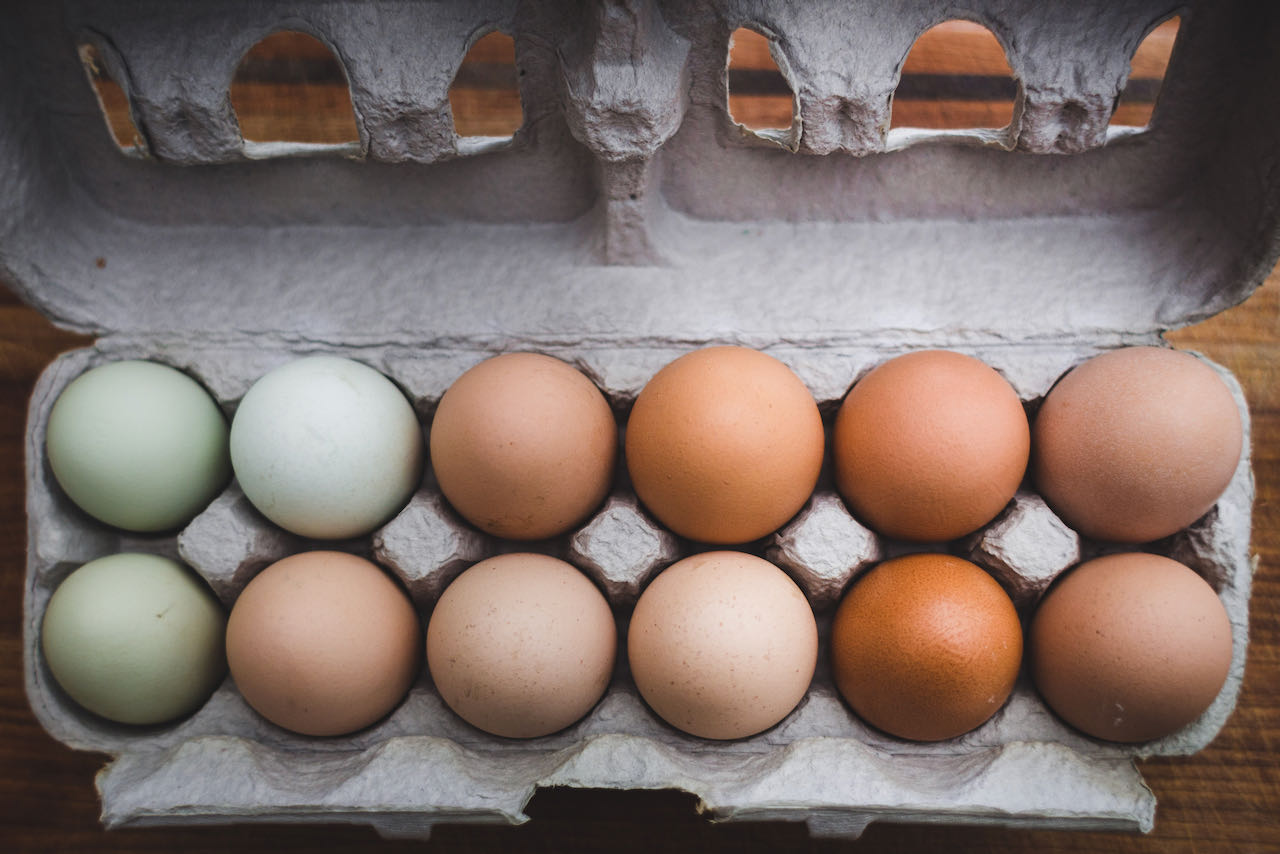 Chickens sometimes lay eggs that look nothing like a standard supermarket egg. Some are huge, some are tiny, some are ball-shaped, some are pointy, and some are soft-shelled. There are various reasons for these oddities.
Chickens sometimes lay eggs that look nothing like a standard supermarket egg. Some are huge, some are tiny, some are ball-shaped, some are pointy, and some are soft-shelled. There are various reasons for these oddities.
Each hen will have her own ‘quirks’ in terms of egg size and colour. Although most chicken breeds lay light brown eggs, some have eggs with pigmented shells. A hen will produce eggs of the same colour throughout her laying years. The palette ranges from deep browns to light blues and pastel greens, with speckling adding another dimension of prettiness.
Odd shapes and sizes are something quite different, though. They are quirks rather than breed-specific traits.
Why are chicken eggs sometimes bigger or smaller than usual?
A huge egg sometimes contains two yolks. In these cases, the hen has doubled up on her usual daily production and has had to produce a giant egg to accommodate the extra mass. These eggs usually have smaller-than-usual yolks, but they look very eye-catching in the poaching or frying pan!
Young birds often produce small eggs, and they will begin laying regular eggs very quickly. Some smaller bantam breeds produce small eggs all the time, of course.
Why are chicken eggs sometimes misshapen?
An oddly-shaped egg can be produced for various reasons. It often takes young hens an egg or two before they settle into their regular pattern. Stress in the chicken coop can lead to misshapen eggs too. This is usually due to a hen having the urge to lay but finding her space in the laying box occupied by another bird.
Misshapen eggs can be elongated, or they may have a thin, pointy end. Sometimes they are rough-looking, with craggy rather than smooth surfaces, or with thicker bands of shell running across their middles. In all these cases, the egg inside is unaffected and is perfectly safe to eat.
A ball-shaped egg is usually a sign of slight calcium deficiency. The round shape requires less calcium than a normal oval egg.
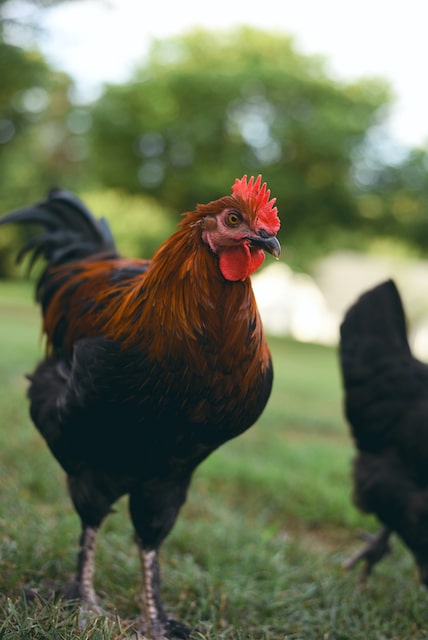 Are oddly-shaped chicken eggs a sign of illness?
Are oddly-shaped chicken eggs a sign of illness?
Infectious bronchitis can lead to misshapen eggs. An infected hen will stop producing eggs for a few days or will only lay intermittently. The eggs she lays will have thin, wrinkled or rough-shelled eggs, and the white of the egg will be watery. It is also common for the affected eggs to have lighter-coloured shells than usual. The condition is rare, and chickens can be vaccinated against it.
Laryngotracheitis is another illness linked to egg abnormalities, and this, too, can be prevented through vaccination. Any ailment can cause a hen to become stressed, so, in theory, any illness can result in misshapen eggs.
Why do chickens lay freckled eggs?
Some breeds always lay speckled eggs. However, if a hen that typically produces plain eggs lays speckled ones, there are various possible causes. She may have been shocked or stressed in some way while the egg was forming, or she may have developed a quirk in the pigment-producing part of her egg-laying system.
Freckling is often the result of excess calcium production, sometimes associated with the ‘end of season’ laying at the beginning of winter. On some eggs, there is a marbled pattern rather than an area of freckles.
The speckling is usually smooth, but it sometimes manifests as raised blotches of excess calcium. These can be spots or wormlike strands, and they often occur as single spots on an otherwise standard egg. This may be linked to dehydration, so make sure your hens have enough water, and that a timid hen isn’t being bullied away from it all the time.
Why do chicken eggshells sometimes have a white ring?
Viewed from the side, an eggshell with this peculiar oddity has a thick white ring, looking uncannily like an x-ray of the egg that lies beneath. It is usually caused by an interruption in the formation of the eggshell, caused by stress or by a second egg entering the internal production line.
The second egg produced in this process will usually have a flattened side, as it has bumped into the first egg during the early stages of shell formation and has been ‘squashed’ into an odd, flattened shape.
Why are chicken eggs sometimes wrinkled?
A wrinkly eggshell can be a sign of stress or illness, but is usually a hereditary condition. Some older hens begin to lay wrinkly eggs too. The wrinkles are often deep grooves, giving a very misshapen egg and making this perhaps the weirdest of all the egg oddities.
The wrinkles sometimes look like a series of cracks in the shell. This results from an egg cracking during calcium formation, and the cracks are the chicken’s repairs, laying calcium over the cracks. Once again, the underlying cause is usually stress or illness, although sometimes it is simply the result of a second egg ‘crashing into’ the first due to an over-productive system.
Why do some chicken eggs have soft shells?
A soft shell is a sign of calcium deficiency or a lack of vitamin D. Low calcium can be prevented by making sure the hens have a high quality feed and don’t gorge on kitchen scraps (which may fill them up so much that they don’t bother eating the layers pellets). Low vitamin D can be prevented by sunlight – not always easy in the cloudier months of the year!
Other possible causes include heat stress, too much salt or too much spinach. When feeding chickens kitchen scraps, avoid giving them anything that is salted.
The extreme version of the soft-shelled egg is the egg with no shell at all. If a hen lays a shell-less egg, it should be cleaned up at once, as it will soon become rotten in the warm coop.
Weird eggs are usually one-offs, and they are nothing to worry about. If a hen lays an odd egg two days in a row, it is worth looking at possible underlying causes. Diet and stress are the chief culprits.
In terms of culinary uses, don’t worry. With the exception of soft-shelled and shell-less eggs, all these egg oddities are safe to eat.
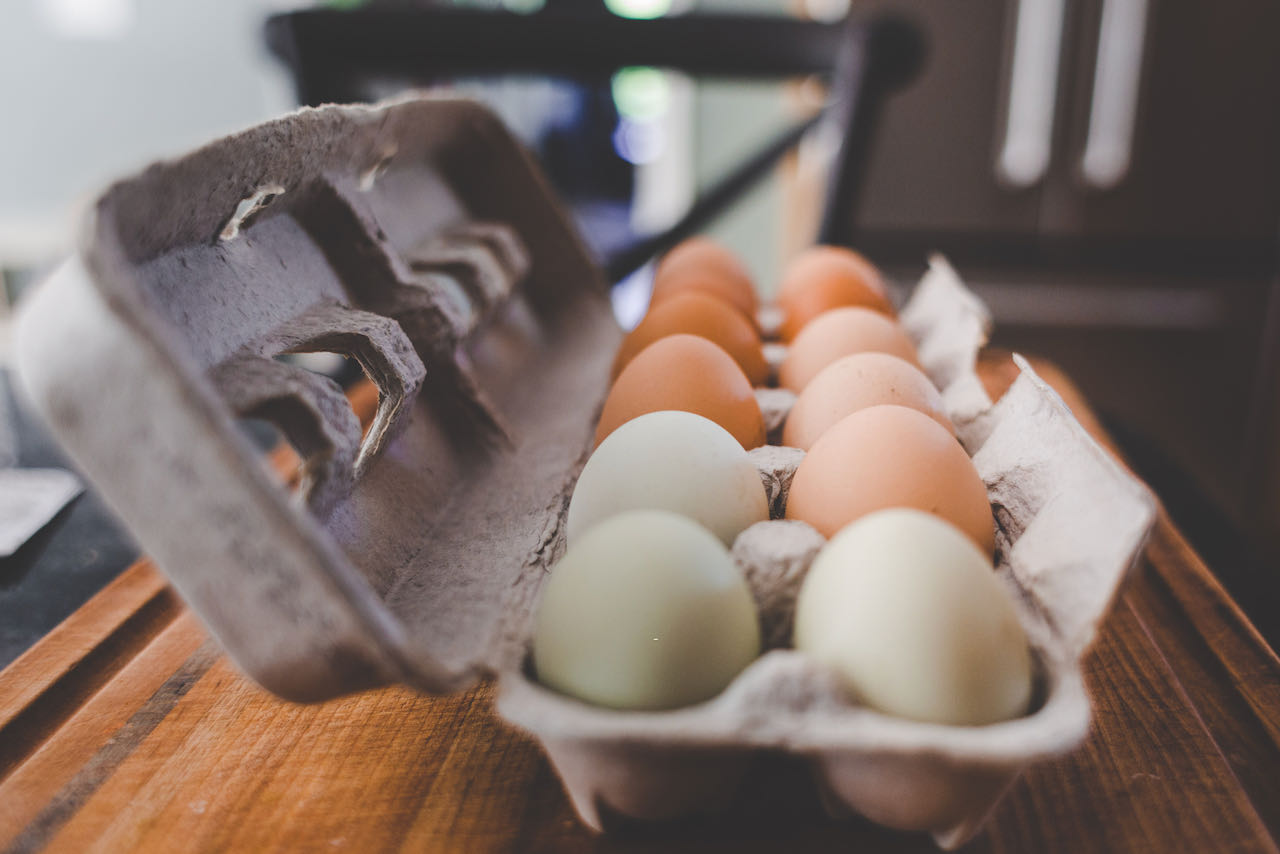
This entry was posted in Chickens
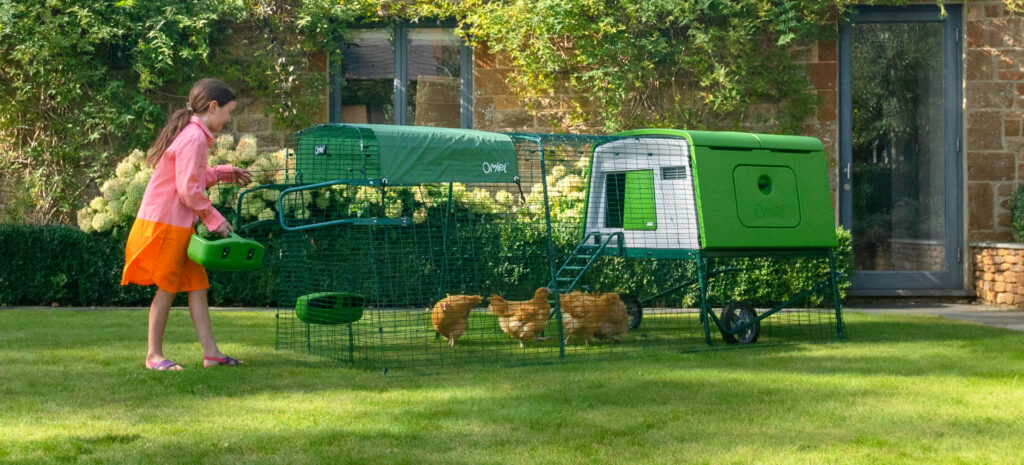
Don’t miss out on this amazing opportunity to get free delivery on selected Eglu Chicken Coops!
Terms and conditions
This promotion of free delivery on selected Eglus is available while stocks last. No promo code needed, delivery costs have already been deducted at checkout. Promotion includes Eglu Cube in green and Eglu Go Chicken Coop in green and purple. Excludes Eglu Cube in purple, Eglu Go UP and Eglu Go Hutch, Eglu Go run handles, wheel set and run extensions. Subject to availability. Free delivery only applies to the included products, delivery charges will be added for other items added to the order. Free delivery offer is not redeemable on pallet deliveries. Omlet cannot take responsibility for third party supplier delays such as courier service. Free delivery is only valid for orders sent to mainland UK, IE, FR, DE, NL, BE, SE, IT, DK, NO, ES and PL and only applies to Standard Delivery Service. Omlet ltd. reserves the right to withdraw the offer at any point. Offer cannot be used on existing discounts or in conjunction with any other offer.
This entry was posted in Chickens
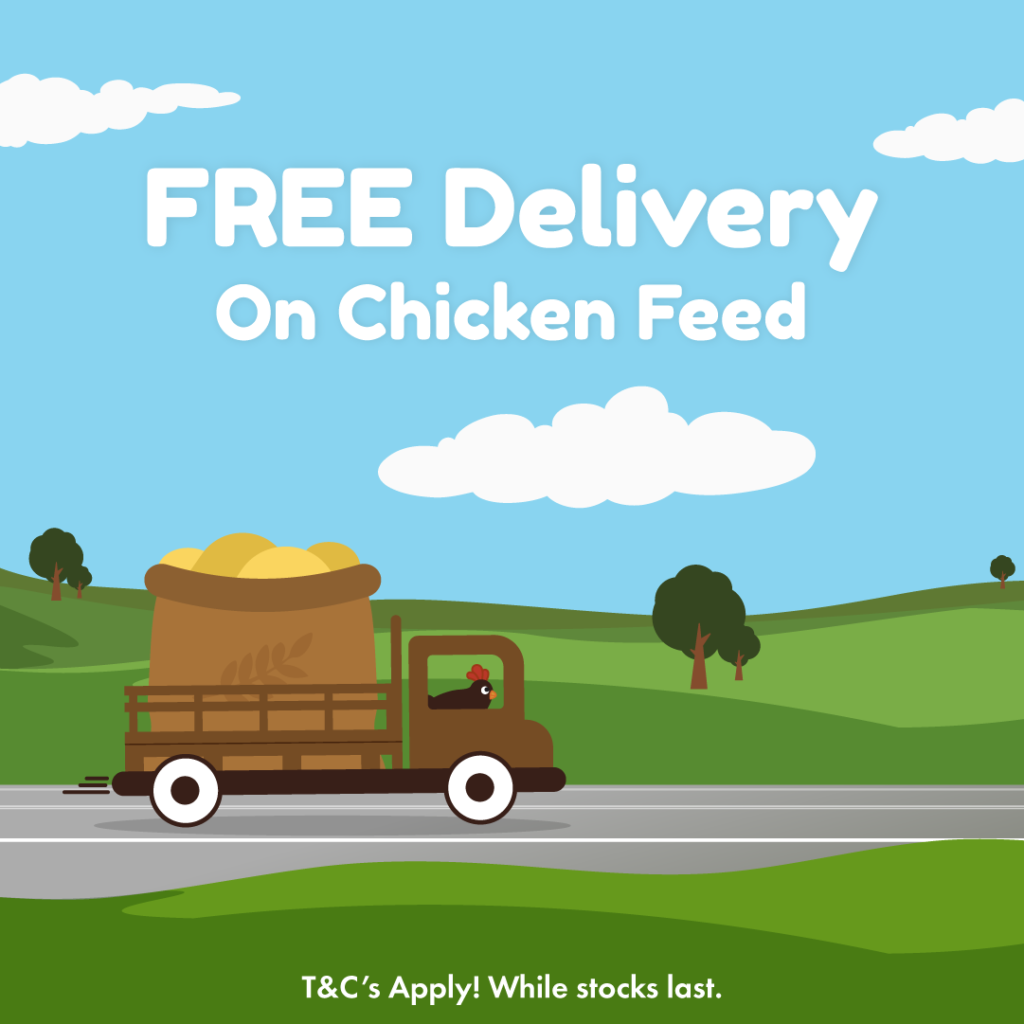
Treat your chickens this summer with some fresh Omlet Chicken Feed and Corn. Until midnight on Sunday the 8th August you get FREE delivery on two bags when you enter the code FEEDSM at checkout!
Terms and conditions:
This promotion of free delivery on Omlet Chicken Feed and Corn is only valid from 21/07/21 – midnight on 25/07/21 (Edit: now extended until 08/08/21). Use promo code FEEDSM at checkout to get free delivery on Omlet Chicken Feed and Corn. This offer is available on twin packs. Offer is limited to 2 bags per customer. While stocks last. Subject to availability. Free delivery only applies to the included products, delivery charges will be added for other items added to the order. Free delivery offer is not redeemable on pallet deliveries. Omlet cannot take responsibility for third party supplier delays such as courier service. Free delivery is only valid for orders sent to mainland UK, and only applies to Standard Delivery Service. Omlet ltd. reserves the right to withdraw the offer at any point. Offer cannot be used on delivery, existing discounts or in conjunction with any other offer.
This entry was posted in Chickens
Chickens are fascinating creatures, and their eyes, even more so. Here are some amazing facts about chickens’ eyes that you may not have heard before!
Chickens Can See More Colours Than Us
Chickens are tetrachromatic. They can see the colours we see in (red, yellow and blue), but whilst we have three types of cones in our retinas, chickens have four, which allows them to see in ultraviolet light. This gives chickens access to a much wider range of colours and shades than humans.
Chickens Have a Third Eyelid!
Believe it or not, chickens actually have a third eyelid, on each eye! The third eyelid, called the nictitating membrane, horizontally draws across the eye which helps clean, moisten, and further protect the eyes from dirt. The nictitating membrane is transparent in appearance which means that chickens still have the ability to see, even when the third eyelid is closed.
They Can Use Each Eye Independently
Chickens are able to use each of their eyes independently, with a 300 degree field of vision (humans only have 180!), meaning that both of their eyes can focus on different tasks at the same time. This is also known as monocular vision, which amazingly already begins even before a chick’s arrival. When the chick is still in its shell, it turns towards the right to absorb any light and the left side of the shell is covered by their body. When the chick then hatches, nearsightedness develops in their right eye, which will allow the chick to search for food, as the left simultaneously develops farsightedness. This is to help the chick look out for any potential predators. You will probably notice this from when chickens tilt their heads when a hawk flies over.
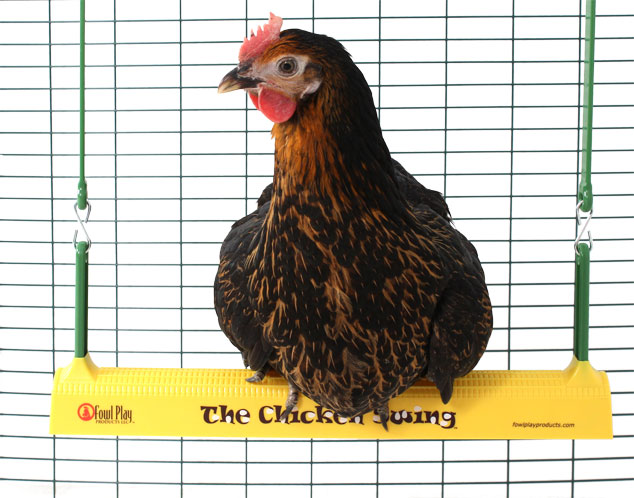
The Omlet Chicken Swing is the perfect toy for keeping chickens entertained!
Chickens Have Terrible Vision in The Dark
Night vision definitely isn’t their strong point! Having descended from dinosaurs all them millions of years ago, as opposed to being preyed on by them like other species, chickens had no need to learn how to run and hide in the dark. For this reason however, chickens today require protection at night because just like humans, they’re awake during the day and sleep during the night, and are highly susceptible to predators.
Chicks Have Amazing Eyesight From Birth
When chicks first hatch, they surprisingly have remarkable eyesight, in fact a lot better than humans. From the minute they hatch, chicks are able to detect small items such as grains of food and even have spatial awareness. A human baby however, lacks this ability and does not develop such skills until a few months down the line.
Chickens Rarely Move Their Eyeballs
Chicken eyes have a very limited range of motion and lack the ability to remain focused on an object whilst the rest of their body is moving. This is why you’ll often see chickens walking around, bobbing their heads, whilst facing onwards. It is not so much a case of chickens not being able to actually move their eyes at all, but rather their eyes cannot move quickly enough to process the image in front of them. Instead, chickens will tend to turn their heads when they want to gain better eyesight of something.
Their Eyes Have a Double Cone Structure
The retina of the eye is composed of rods and cones, the rods being to detect light-sensitive motion, and cones to see colour. As we found out earlier, chickens have more types of cones than us, hence why they are able to enter a fourth dimension of colour, which us humans can’t. A double cone retina structure means that a chicken’s eyes are more sensitive to movement. This is advantageous to chickens as it gives them a greater ability to detect motion, which is helpful when it comes to spotting a perceived threat.
Chicken Eyes Make Up 10% of Their Head Mass
That’s quite a lot, considering our eyes only make up for approximately 1% of our head mass! Although it may look humorous, there’s actually a good reason behind it. Having such large eyes helps chickens to see larger and clearer images as they are produced.
Chickens Can Sense Light Through Their Pineal Gland
Light reaches chickens through either their eyes, skulls, or skin, which activates the pineal gland in the brain. The pineal gland, also sometimes referred to as ‘the third eye’, is something else that makes chicken vision oh so interesting. A pineal gland helps chickens to sense daylight, or the lack of, even if they are unable to see with their eyes. This means that even a blind chicken is able to detect lighting or seasonal change!
They Have the Ability to Recognise up to One Hundred Different Faces
They say that elephants never forget but apparently chickens don’t either! Chickens are able to recognize up to one hundred faces, be it other chickens, humans or any other species. They can also amazingly decipher between their positive and negative encounters.
After a few interesting facts, we’re sure that you’ll now know a whole lot more about the amazing subject of chickens’ eyes, that’ll be bound to get you wondering just what’s really going on through the eyes of your chickens!
This entry was posted in Chickens

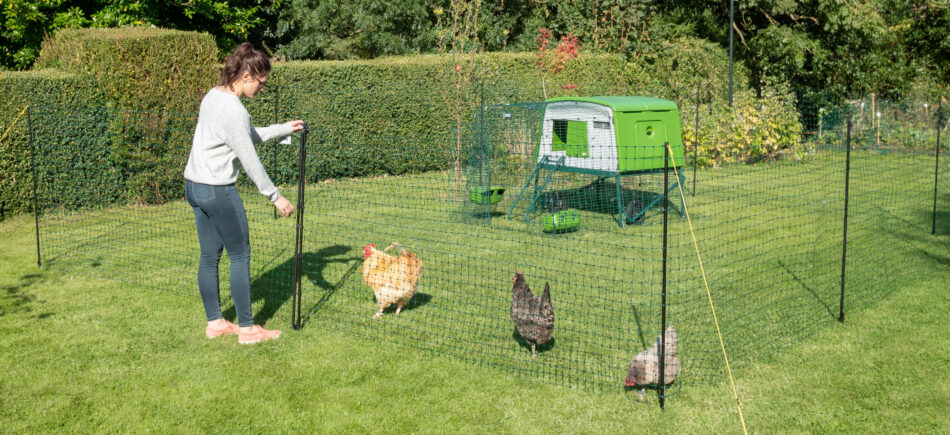
Each year your chickens will experience “moulting”, which is the process of shedding their old feathers and donning new feather skirts. Most hens will slow down their egg production during this time to redirect their energy to the arduous task of growing new feathers. We’ll show you how to help your chickens through a moult, and what to expect throughout the process.
When do chickens moult?
Chickens begin moulting early on in life. In fact, chicks moult frequently during their first few months of life as they shed their baby fluff in favour of their adult feathers. Chicks will moult a total of 4 times:
- First moult within the first 1-6 weeks of age
- Second molt around 7-9 weeks of age
- Third molt around 12-13 weeks of age
- Fourth and final moult around 20-22 weeks of age
By the end of this fourth moult, your chicks’ tail feathers will begin to come in – making cockerels easier to spot.
Once they reach adulthood, all chickens will follow a natural annual moulting cycle that occurs toward the end of summer or the beginning of autumn. The need to grow new feathers will be evident – your hens’ feathers will appear dull or bleached out shortly before they moult. Occasionally, chickens can go through a moulting cycle outside of this timeframe as a response to stress.
How do you know if your chicken is moulting?
While chickens can lose random feathers any time of year due to rough play or preening, minor feather loss is not considered moulting. Molting is accompanied by obvious signs like:
- Patches of missing feathers (some may be large)
- A dishevelled appearance
- Dull combs and wattles
- Irritability
- A sudden drop in egg production
- Increased appetite
The moulting process usually begins with the feathers at the chicken’s head, moving toward the breast and legs, and finally to the tail. By the time the tail is bare, the head feathers will have begun to regrow.
If a chicken is losing feathers and doesn’t grow new ones, you’ll want to do a quick hen health check, as sometimes mites or illness can be to blame for unexplained feather loss. If you suspect an issue other than a seasonal moult, be sure to contact your veterinarian.
What to give chickens to help with moulting
Moulting is not an illness, so while it may not require treatment, your hens will appreciate some extra nutrition during this time. Their taste for protein will increase in response to the extra energy needed to grow new feathers – and they’ll need lots of it.
To add extra protein to the chickens’ diets, give them a feed that is at least 18% protein. If you have a chicken tractor, move your flock to a spot with the most insects. Or, you can use chicken fencing to keep your hens in areas that are dense with bugs for a fresh protein source.
You can also add some apple cider vinegar to your hens’ water, and offer fresh herbs like oregano to give their immune systems a boost. Chicken supplements are an easy way to add nutrients to your flock’s feed, and allowing them to free range as much as possible will help them peck out what their bodies need the most.
What to do when your chickens are moulting
Moulting varies between each hen, but you can expect a full moult to take anywhere from 4-16 weeks to be completed. Try to avoid handling your chickens during this time, and resist covering their bald patches with chicken jackets or clothing. Your hens will be tender and itchy while they’re growing new feathers, so handling them or covering their skin will add unnecessary irritation.
Not all hens will cease egg production for the entire duration of a moult, but it’s normal if they do. It’s normal to expect your hens to stop producing eggs for several weeks while they’re moulting. Flocks will moult together on the same schedule, so be prepared to be short on eggs for a while. Unwashed eggs will keep in the refrigerator for several weeks, so start saving eggs toward the end of summer to head off a temporary egg shortage.
Having an easy-to-clean chicken coop and chicken run are both helpful during a moult – your hens will shed feathers both day and night, leaving feathers everywhere. Dump or rake out shed feathers routinely to keep your flock’s area presentable and to give your hens plenty of dust to bathe in, which will aid in the moulting process.
Keep your flock’s feeders and waterers topped off during their moult, and check on their progress daily. Most hens will go through their cycle without incident or need for human intervention, but keep an eye out for:
- Excessive lethargy from hens
- Bleeding or scabbed over patches
- Difficulty regrowing feathers, or patches of missing feathers even after new ones have grown in
Before you know it, your flock will have ditched their dull, dingy feathers and will emerge dressed in their new, polished plumage just in time for winter.
Molting with Omlet
The annual moulting cycle doesn’t have to be a chore for you and your chickens. Whether you house your hens in our Eglu Cube chicken coop and Walk In chicken run, or one of our chicken tractors, our expertly designed products make it easy for you to help your hens through a moult so that they can get back to feeling, and looking, their best.
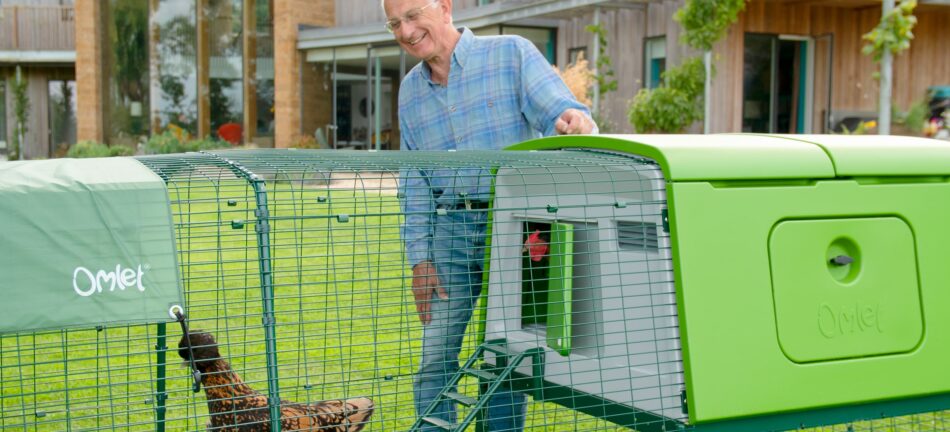
This entry was posted in Chickens
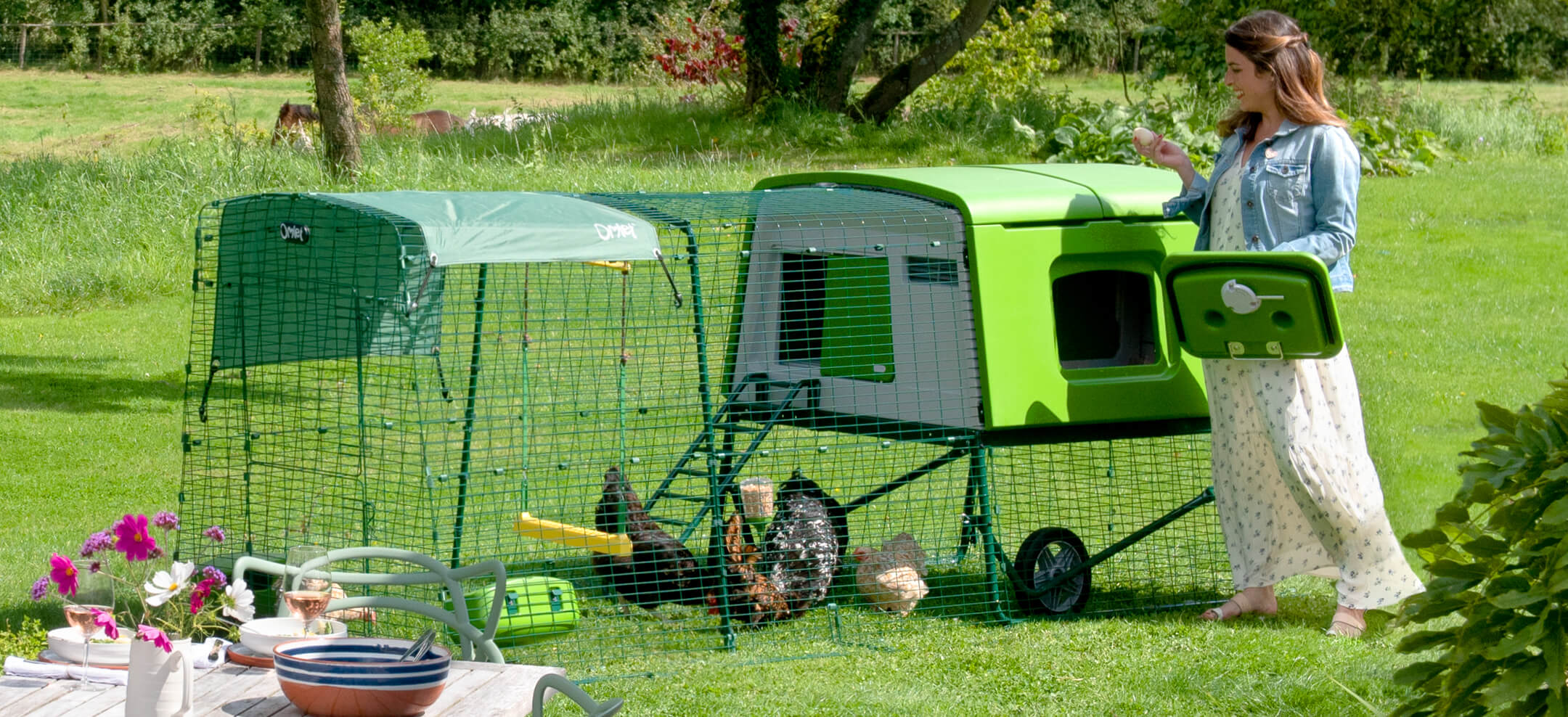
The Eglu Cube Chicken Coop will keep your chickens content all year round!
World’s Heaviest Chicken
The heaviest chicken breed, White Sully, was developed on a farm in California. It’s a hybrid breed of large Rhode Island Reds and other heavy breeds. The largest chicken ever recorded was a rooster called Weirdo, and he weighed just over 10kg (22 lb). It is said that he was so aggressive that he killed two cats during his lifetime and seriously hurt a dog that came too close to his territory.
World’s Oldest Chicken
The current world record holder is Muffy, a Red Quill Muffed American Game hen, who died at the age of 22 in Maryland, USA. One of the more famous old chickens was a Red Pyle chicken called Matilda from Alabama, USA. She was the first hen to receive the title of World’s Oldest Living Chicken from Guinness World Records, and lived for 16 years. Veterinarians said it was likely she lived for so long because she was kept in her owners’ house as a pet, and never laid an egg in her life.
World’s Heaviest Egg
The heaviest egg ever recorded was laid by a White Leghorn chicken in New Jersey, USA in 1956. It weighed 454g (16 oz), and had both a double yolk and a double shell.
World’s Biggest Egg
The heaviest egg was however not the biggest egg ever found. Tony Barbouti in Eastwood, Sussex, once found an egg in his coop measuring 23cm (9.1 in) in circumference. It only weighed just over 161g, but certainly gave Barbouti a shock! He later said that the hen was noticeably shocked after having produced the egg, and she walked a bit funny for a few days, but recovered completely.
World’s Longest Flight
Chickens are not known for their ability to fly. In fact many mean that they can’t technically fly, but only jump high and flap their wings to stay in the air. The longest flight of a chicken that has been recorded is 13 seconds. A different record for the longest distance flown is just under 92m (301 ft). Pretty impressive for a supposedly flightless bird!
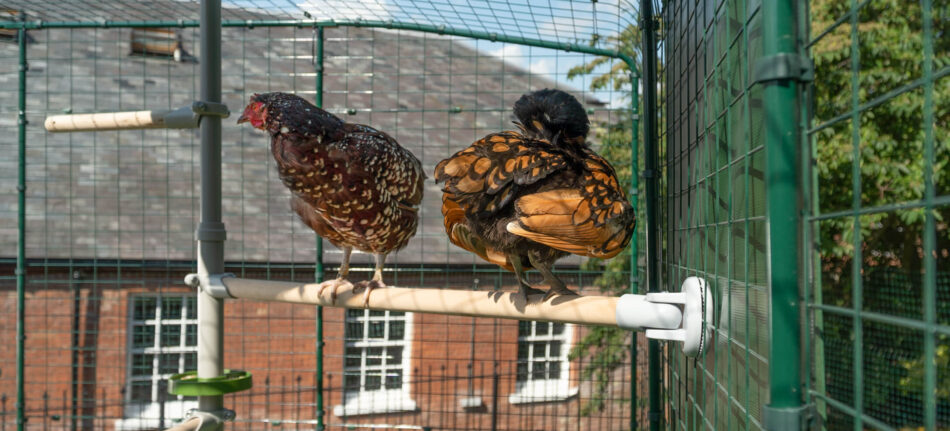
World’s Most Prolific Layer
A Prof. Harold V. Bieller conducted experiments with chickens in the late 1970s at the College of Agriculture, University of Missouri. The highest rate of egg-laying he found was by a White Leghorn in 1979. She laid a whopping 371 eggs in 364 days!
World’s Most Prolific Mother Hen
Northern Irish farmer John Dolan has got two hens that have made it into the Guinness Book of Records. His hen Sally entered by having two sets of chicks in just 55 days, the latest of which produced 11 live chicks from 12 eggs. Chickens normally stay with their young for at least three months, but Sally started laying again after only 21 days. John’s other record breaking chicken Marmalade made it into the Book of Records by hatching a remarkable 107 chicks in two years!
This entry was posted in Chickens
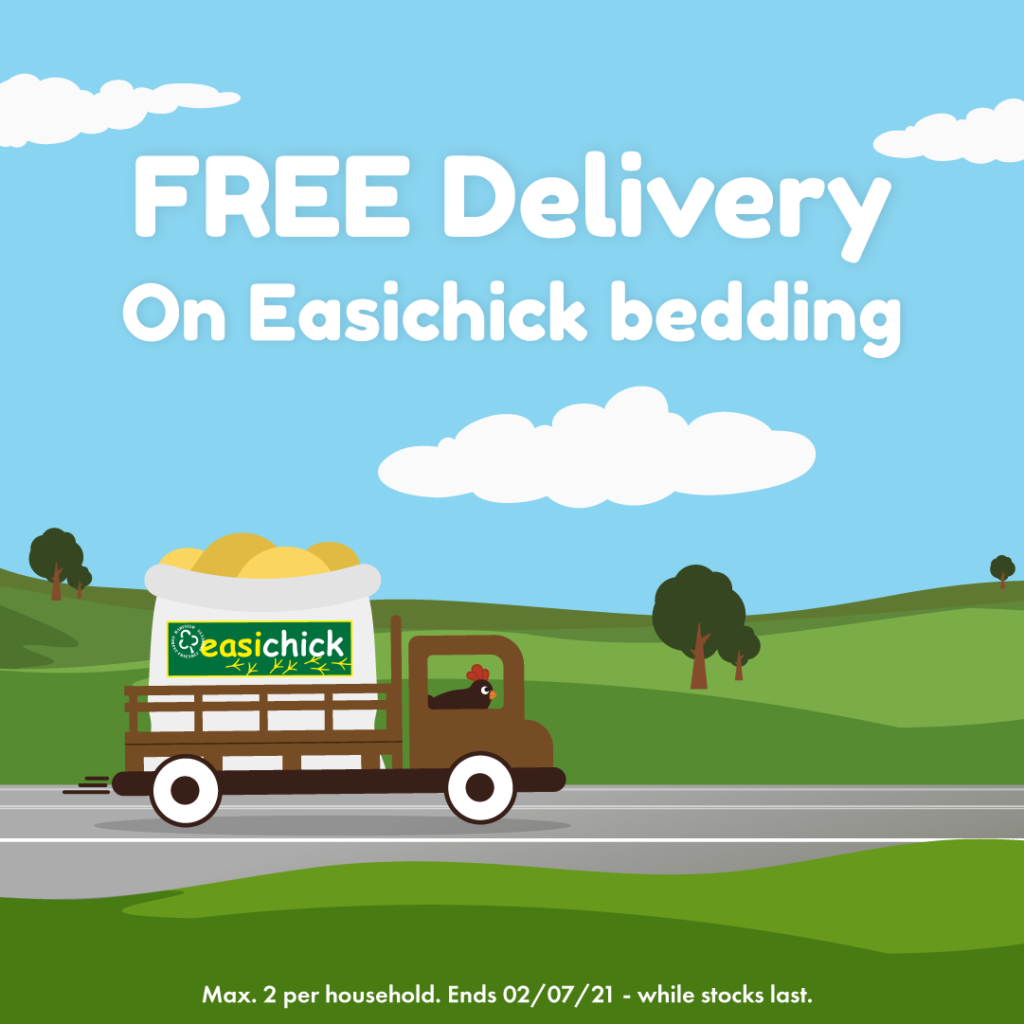
Easichick is a wood-based bedding specially formulated for chickens. Absorbent, dust and bacteria free and full biodegradable, it is the perfect bedding solution for your coop. And for a limited time only, using promo code EASICHICKSM at checkout, you can now get free delivery on two 10kg bags!
Terms and conditions
This promotion is valid while stocks last. The offer of free delivery is available on Easichick Bedding only. Offer excludes any other type of bedding. Offer is limited to 2 bags of Easichick per household. Free delivery only applies to the included products, delivery charges will be added for other items added to the order. Free delivery offer is not redeemable on pallet deliveries. Omlet cannot take responsibility for third party supplier delays such as courier service. Free delivery is only valid for orders sent to mainland UK, and only applies to Standard Delivery Service. Subject to availability. Omlet ltd. reserves the right to withdraw the offer at any point. Offer cannot be used on existing discounts or in conjunction with any other offer.
This entry was posted in Chickens
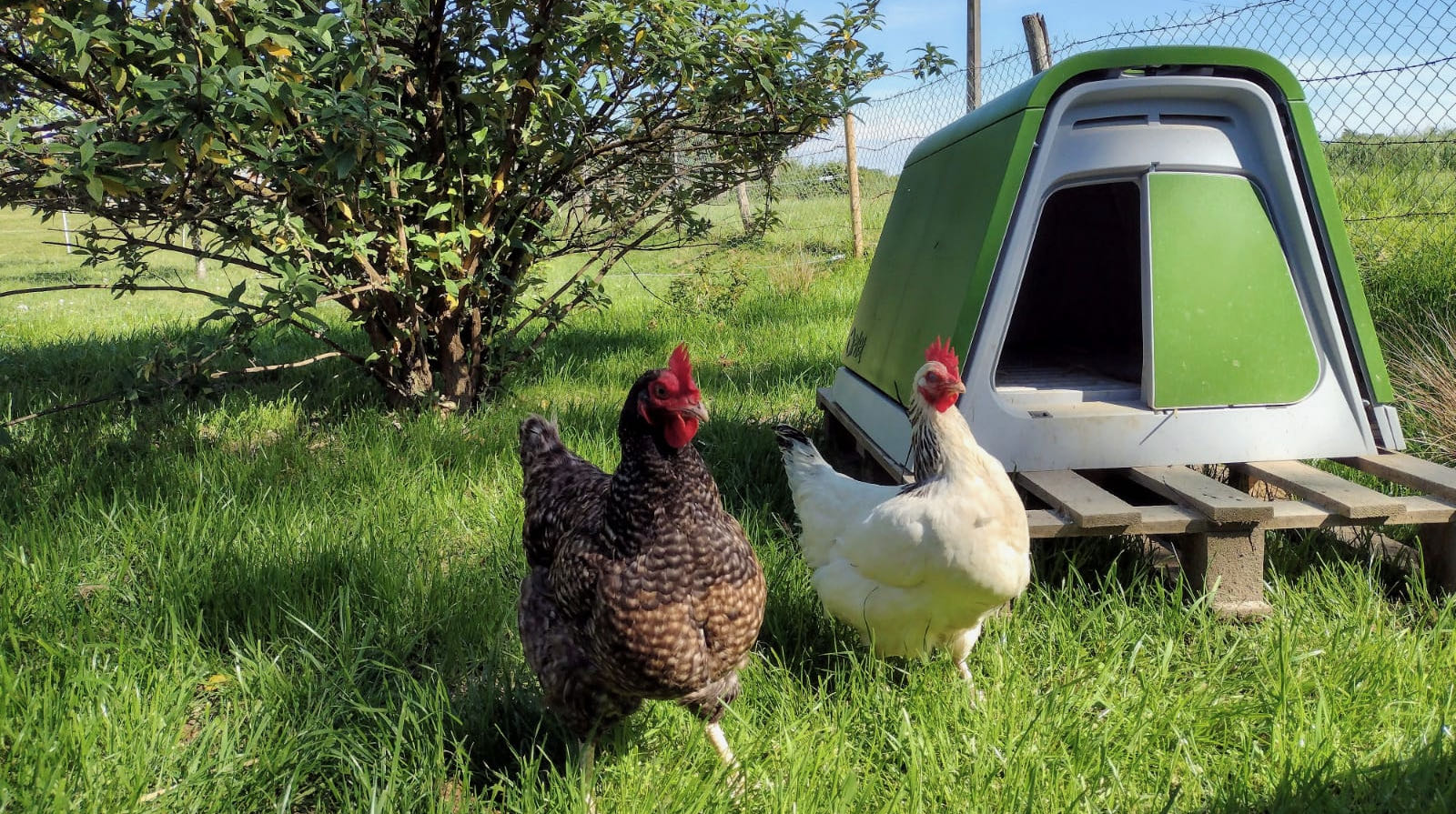
Before introducing new birds to an established flock, they should be quarantined. You will also have to quarantine chickens that have fallen ill or shows signs of illness.
The reason for separating new birds from the established flock is eight parts sensible to two parts paranoia. If you source the new chickens from a reputable supplier or have hatched the birds yourself, there is little chance of the birds harbouring illnesses. However, the potential problems you are guarding against are not easy to spot. Chickens may have internal or external parasites, or the bacteria and viruses that cause disease may be lurking out of sight.
Quarantine significantly lowers the risk of the new chickens spreading parasites or infection in your established flock. In the age of Covid-19, the idea of quarantining has negative associations with isolation and inconvenience. With new chickens, all you’re doing is giving them some space away from the main flock. Other than that, it’s chicken business as usual!
What is quarantine, and when should I quarantine my flock?
Quarantine simply means separating one or more chickens from the rest of the flock. The aim is to minimise the danger of illness spreading between ill and/or new chickens and the existing flock.
All new birds should be put into quarantine. Chickens bought at a show or fair will have been in close proximity with lots of other birds. Chickens from reputable suppliers are not immune to disease either, and even a new-hatched chick may harbour illness, as certain bacteria can penetrate eggshells and infect unhatched birds.
Why do chickens need quarantining?
Bird diseases and parasites spread quickly, and by the time you spot the symptoms, it’s often too late to prevent the other chickens from falling ill. Stressed birds are particularly prone to illness, and a new hen will always be a stressed hen. There’s nothing you can do about this, as it’s a symptom of moving from the world she knew previously to the world of your backyard chickens.
A bird that falls ill needs isolating from the rest of the flock to minimise the risk of the illness spreading. If the issue is parasites – lice, fleas or worms – by the time you spot the problem it will probably be present in every bird, so in these cases, you need to buy the appropriate parasite treatment rather than quarantining single birds.
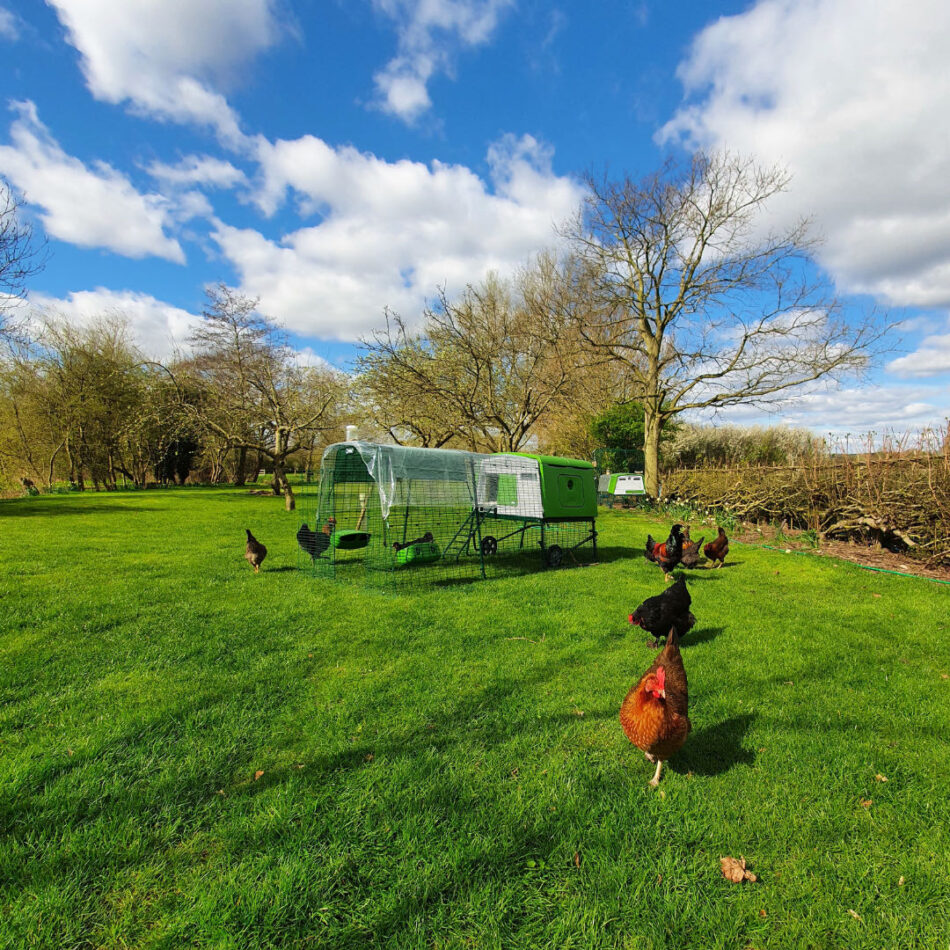
How long do new chickens need to be quarantined?
New birds should be quarantined for at least four weeks. If there are any illnesses, they will show in the first week, following the stress associated with the move. Give the new birds a thorough health check every few days.
In the final week of quarantine, keepers with a larger existing flock often introduce an older bird – perhaps one that has stopped laying – into the quarantine shed. If at the end of this week the introduced hen is healthy, all is well. If there is any disease lurking unseen, the older bird will begin to look unwell. This is the so-called ‘Canary in the mine’ method, and not everyone will be happy putting an older bird at risk. However, the main point is that you are 90% sure that there is no problem in the quarantined flock by this stage.
Note: bird flu, or avian influenza, has an incubation period of around 21 days, so a hen that was infected on the day you brought her home will not show symptoms for three weeks. This is one of the reasons why the quarantine period is so long.
Setting up a quarantine area for new chickens
There is a simple checklist that gives the quarantine the best chance of being successful:
1. Give the new birds a physical check, looking for signs of lice or fleas. Check the consistency of their droppings and their general posture, referring to our Easy Health Checks Chicken Guide for reference.
2. Make sure the enclosure and coop have everything the new birds need, including a roosting perch, an egg-laying box, fresh food and water, and shelter from the elements.
3. Ensure that no feathers, sawdust, dander, food or water from the quarantined new birds enter the main flock’s enclosure.
4. Don’t wear the same shoes and clothes when tending the healthy and the ill birds. Infection can spread quickly, especially on your hands and the soles of your shoes.
5. The new birds should be kept as far from the other chickens as possible. Ideally, they should be at least 10 metres (33 feet) from the main flock, and downwind as much as possible. However, this will not always be practical, and simply keeping the new chickens in a separate enclosure will be as far as many owners can go. If there is an enclosed building to keep them in, that’s perfect. Keeping the new birds upwind of the existing flock is even more important in these close-proximity set-ups.
What to do if the quarantined chickens fall ill
If any of the new birds become ill, you will need to identify the illness. If you are uncertain, call in expert help to assist with the diagnosis. Depending on the problem, the new chickens will need to be treated and isolated for another month or so. If the illness turns out to be avian flu or another lethal disease, the birds will have to be culled. In the case of the bird flu, check out our What You Need to Know About Avian Flu in 2020/2021 article for the latest advice.
Quarantine of new hens is a better-safe-than-sorry routine that ensures health and happiness in your ever-changing flock of chickens. It also has the advantage of acclimatising newcomers to the sights and sounds of your garden before they mingle with the existing flock.
This entry was posted in Chickens
As we head into summer and the weather begins to warm up, you might be wondering how you can help your chickens keep cool in the hotter months. Get prepared now and catch up with our previous blog posts on keeping happy and healthy hens during summer below…
7 Ways to Help Your Chickens Stay Cool This Summer
Did you know, that chickens can’t sweat? Instead, chickens use their legs, combs and wattles to lead heat away from their bodies. They also pant and spread their wings in order to get some air through their feathers. But what can you do to help?
From water to dust baths, here’s 7 simple but effective tips to help your chickens stay cool in the hot weather…
10 Things Not to Do in Summer if You’re a Chicken Keeper
From 7 things you should do, to 10 things you shouldn’t do this summer if you’re a chicken keeper! This advice is just as important as the tips above for ensuring a comfortable environment in the warmer weather, and also preventing your chickens from overheating.
How to Protect Your Chickens from Red Mite
Red mites, or Dermanyssus gallinae, are without a doubt backyard chicken keepers’ worst enemies! They are nocturnal creatures living in cracks and crevices of the coop, and they only come out at night to feed on chicken blood. Most long term chicken keepers will have encountered these parasites, and can confirm that they are more destructive and difficult to get rid of than all other pests combined.
Learn how to treat and prevent red mite infestations in your coop to keep your chickens happy this summer.
How the Eglu Keeps Chickens Cool
Traditionally chicken coops and rabbit hutches have been made from wood. This has its advantages: it’s an easy material to work with, it’s customisable and it looks attractive. However, when it comes to coping with the weather, it can leave a lot to be desired. Wood is not a very good thermal insulator, meaning if it’s hot outside the temperature will transfer through to the inside quickly.
If you’re using a wooden coop, it might be a good time to consider upgrading to a better insulated and ventilated house before the worst of the hot weather hits. Learn how an Eglu keeps chickens cool in this blog post.
This entry was posted in Chickens
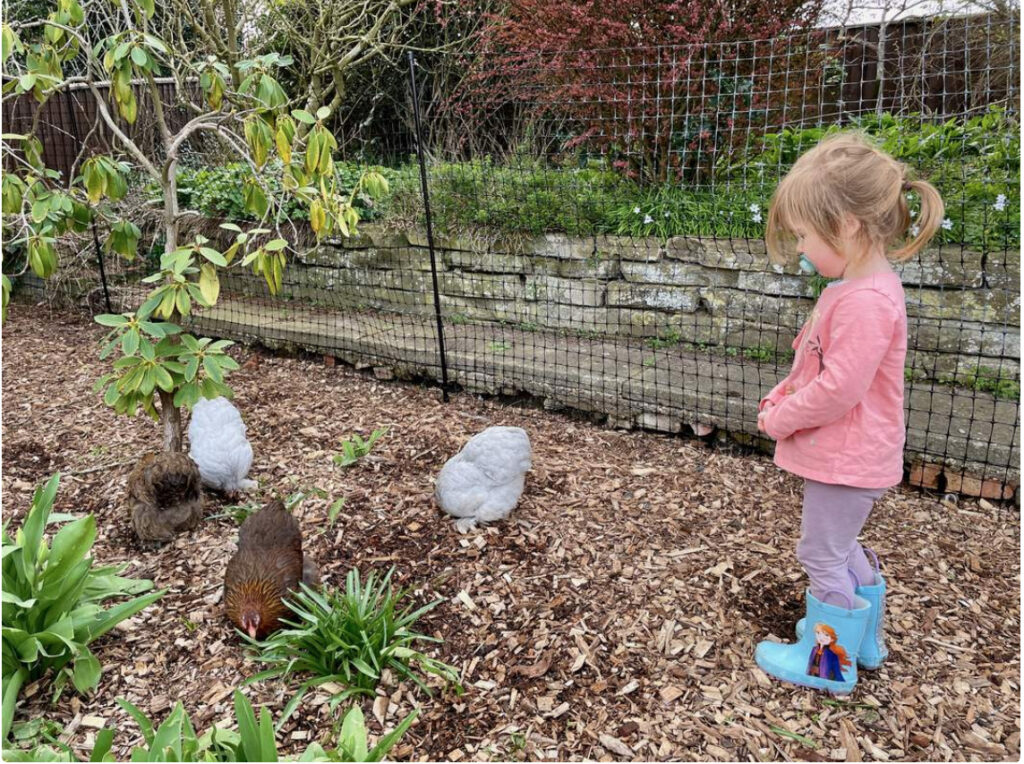 Keeping chickens is a wonderful way to educate children about the lifecycle of animals and show them the many benefits of keeping any farm animal. It’s not just the never-ending supply of eggs on toast that children will enjoy – keeping chickens is a rewarding experience that will teach children of all ages the value of animal life and companionship.
Keeping chickens is a wonderful way to educate children about the lifecycle of animals and show them the many benefits of keeping any farm animal. It’s not just the never-ending supply of eggs on toast that children will enjoy – keeping chickens is a rewarding experience that will teach children of all ages the value of animal life and companionship.
Learning to handle your chickens
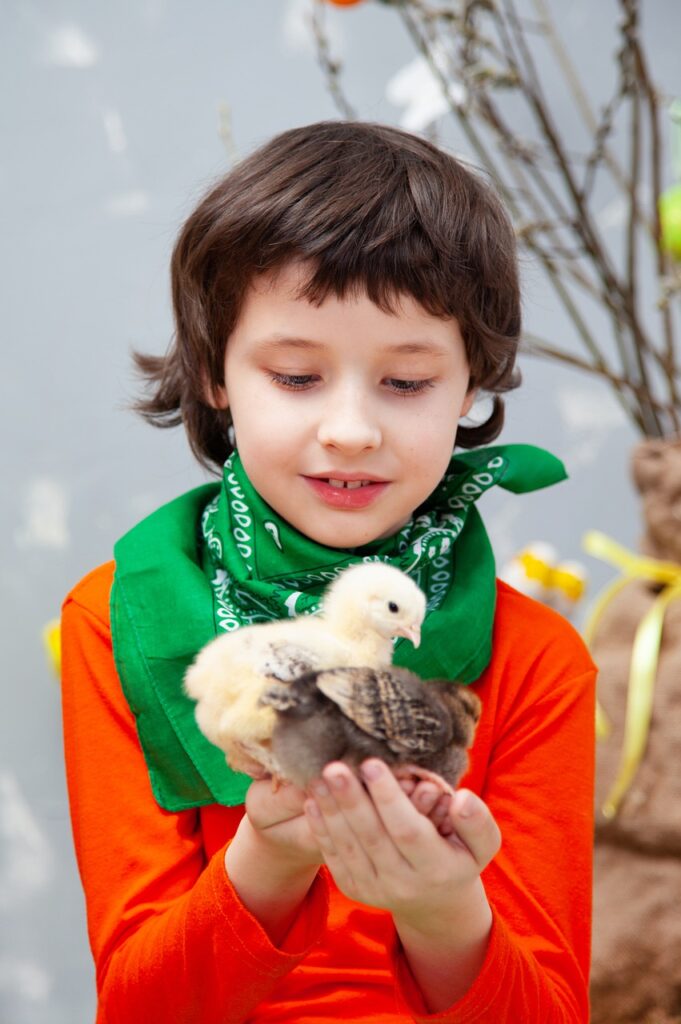
If you choose to buy your chickens when they are still chicks, there’s a better chance of children forming bonds with them. Handling chicks regularly is easy and great fun for children, a surefire way to make them feel comfortable and confident around the hens. Some chicken breeds – the Silkie and Sussex, for example – actually enjoy being occasionally petted, not unlike cats! Always remind your kids to be gentle with the birds, though, whether chicks or adults. Even a ‘tame’ hen should be approached slowly and with caution and respect – sudden moves trigger a chicken’s instinct to flap, squawk and panic!
It’s important that children learn to wash their hands whenever they’ve been touching the chickens, or after washing and cleaning the coop or feeding the hens. Chickens, just like us, have all kinds of bacteria which are healthy for them, but not necessarily for us!
Daily chicken activities
Chickens need tending every day, but they are very undemanding as pets. This is a great combination for kids, as it teaches them about routine and allows them to enjoy time with the chickens without feeling it’s too much of a chore.
Getting kids involved in the daily activities that keep chickens happy and healthy is fun and beneficial in giving children a sense of responsibility. The first job of the day is opening up the coop. Children love getting out into the garden after breakfast, and once they’ve refilled the feed and water bowls, it’s time to open the coop and let the chickens into the run. Again, these are simple but meaningful tasks that children will enjoy.
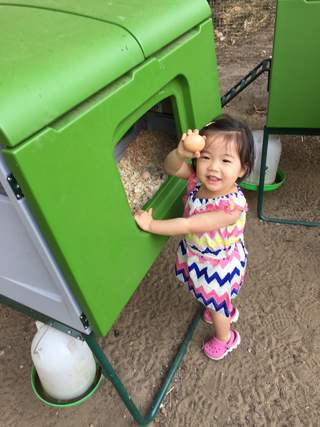 Healthy chickens eat and drink lots in a day, so ask your children to check out our guide on Feeding and Watering Your Chickens to turn them into instant experts!
Healthy chickens eat and drink lots in a day, so ask your children to check out our guide on Feeding and Watering Your Chickens to turn them into instant experts!
Mucking out the chickens is probably a job for children of 11+, but consider asking a young child to help out too. They can certainly assist with putting new bedding and toys into the coop once the mucking out is completed. It can be fun setting up your chickens’ coop in new and different ways, and you can really tell when they love their homes!
Children love going into the chicken coop to find freshly laid eggs, and if it’s in time for breakfast, that’s even better! You could teach your child to collect and (if necessary) gently clean the egg, and if they are yet to learn any cooking skills, a boiled egg is a great place to start! Perhaps soon you’ll be getting breakfast in bed…
Teaching your children responsibility

Owning chickens is a great way to teach children responsibility. By looking after hens, a child can learn that a little hard work and reliability put food on the table – literally, in this case!
Having a pet is sometimes people’s only reason to go outside first thing in the morning, and any pet owner would tell you that this improves their lives in countless ways. Just like walking a dog, going out into the garden to feed the chickens can be a fun way to introduce routine, responsibility and regular fresh air into your kids’ lives.
Get your kids involved in choosing the chicken breed
If you want a friendly hen for your kids, Silkies are an excellent choice, as they are known for their affectionate nature. Other child-friendly breeds include Australorp, Cochin, Orpington, Plymouth Rock, Sussex and Wyandotte.
For more information on how to get children involved with chicken-keeping, including which breeds to choose, check out our article Children Love Keeping Chickens.
Tameness isn’t guaranteed in any hen, though, and the most important thing is ‘socialising’ them from – i.e. handling them – from a young age. If children spend time with the hens as soon as they arrive in the coop, they’ll be well on the way to making a feathered friend for life.
Whichever breed you choose, getting your children involved in the decision will help them feel responsible and connected with their chickens from day one. And then there’s all the fun of choosing names for the hens!
Having fun with your chickens at Easter
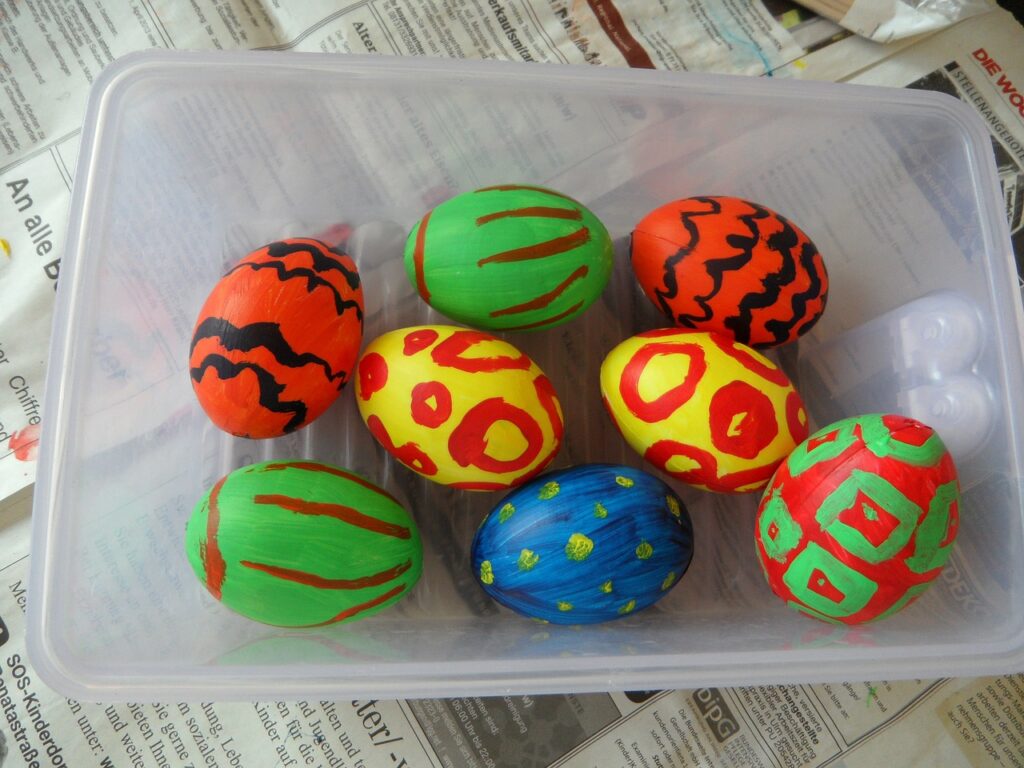 There are many Easter traditions that involve chicken eggs, the ever-popular egg hunt being the most obvious example. Try hiding eggs that your chickens have laid themselves – it’s lots of fun and a good way of working up an appetite before an egg-based breakfast!
There are many Easter traditions that involve chicken eggs, the ever-popular egg hunt being the most obvious example. Try hiding eggs that your chickens have laid themselves – it’s lots of fun and a good way of working up an appetite before an egg-based breakfast!
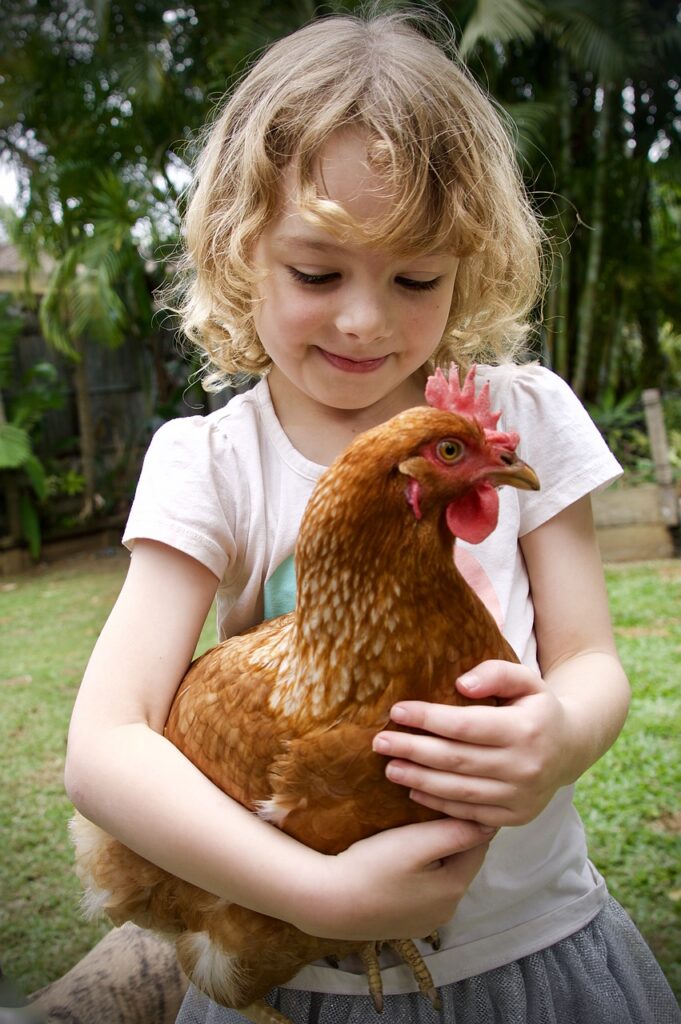
Another Easter tradition is the painting of boiled eggs, which is a great way to introduce children to the weirder world of traditional art. And why not go a step further and go egg-rolling – another fine old British tradition! Find a hill and roll your painted eggs down the hill – the last one to crack and release its hard-boiled yolk wins! You’ll sometimes find an egg that seems unbreakable, no matter how many times it’s rolled – the challenge then becomes trying to break it, by throwing it as high as possible!
So, whether it’s using eggs for cakes or quiches, rolling hard-boiled eggs down a hill, or just spending meaningful social time with the chickens, there are loads of reasons why hens make great pets for children!
This entry was posted in Chickens
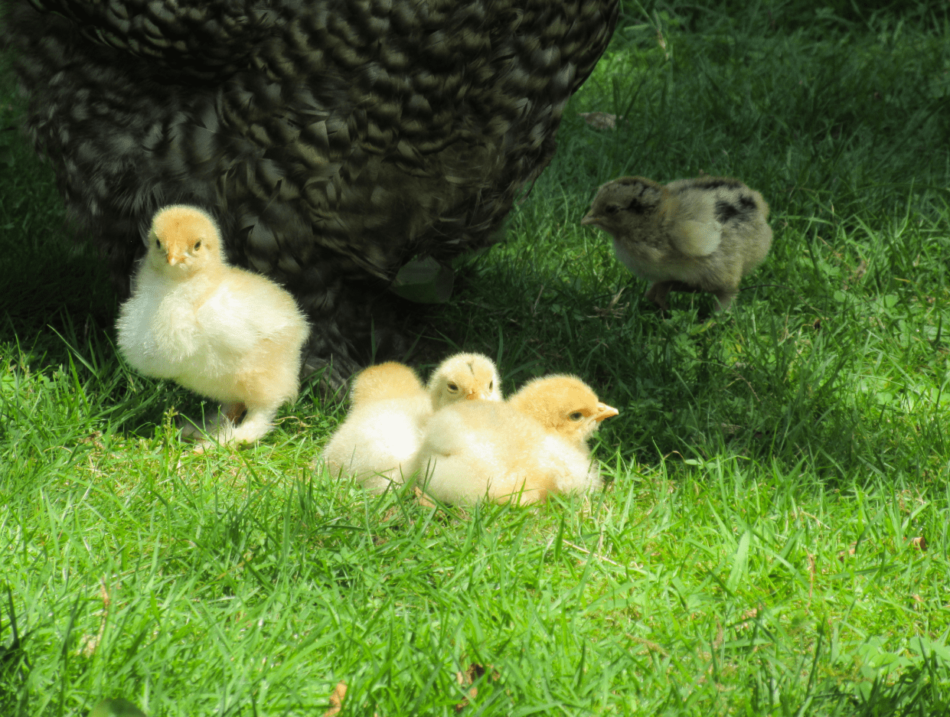
Chickens pretty much take care of themselves from an early age. However, there are certain things you need to avoid if you want your baby chickens to get the very best start in life.
In this article, we present six easily preventable pitfalls.
1. Not having the brooder ready before the chicks arrive
You need to sort out the chicks’ housing – known as a brooder – before the birds arrive. Otherwise, there will be nowhere to put them, and that would be disastrous.
You can buy brooder boxes made specifically to keep chicks in, or you can make a DIY brooder using a cardboard box or plastic bin with holes in the side. Only choose the DIY avenue if you’re 100% confident you know what you’re doing.
The important thing is to keep the birds in a warm and well-ventilated space, but protected from drafts. As a rule of thumb, allow two square feet per chick – this is more than enough space for fluffy newcomers, but remember you will also need to make sure they have enough room when they get bigger – which they will do very quickly!
A chicken wire covering for the top of the brooder is advisable. Chicks can easily ‘fly the nest’ if the sides of the brooder are less than 45cm high. Older chicks need roosting poles for perching when they sleep, and will appreciate the inclusion of these in the brooder.
2. Not getting the temperature right
Too much or too little heat can kill chicks, so this is another life-or-death issue. The chicks need to be kept in a temperature of 35 °C (95 °F) in their first week. The heat should then be reduced slightly every five days or so until you’ve reached room temperature.
The source of heat is an important detail too. A heater designed explicitly for coops and aviaries is the best option, or a red heat bulb. You should not use a white heat bulb, as these produce glare that keeps chicks awake at night. This will make them irritable, as a result of which they may start pecking each other. Standard light bulbs are not suitable either.
Even the correct type of heater or bulb will need some adjusting in terms of where it hangs, and how high it is from the ground. Watch how the chicks behave in relation to the heat source. If they crowd together directly under the bulb or in front of the heater, it means they’re too cold. Lower the heat source or add an additional one, depending on the situation.
If the chicks cluster away from the heat source, they’re probably too hot. In this case, the heater or bulb will need to be moved further away, or its temperature reduced slightly. The chicks’ behaviour may change as they grow larger and the space becomes more crowded, so watch them carefully each day.
3. Using the wrong type of bedding
With chicks, it’s not a case of “any old bedding will do”. Use wood shavings or other non-toxic, absorbent material recommended for baby chickens. Avoid newspaper or shredded magazines, and don’t use aromatic, oily woods such as cedar. A 2.5cm layer of this bedding will be enough. If you omit the bedding, the chicks are in danger of slipping and sliding on the surface, which can lead to an injury called “splayed leg”, which is a life-threatening condition. The bedding should be changed at least once a week to prevent sticky droppings from accumulating.
4. Getting the wrong type of feed
Starter feed – in the form of either ‘crumble’ or ‘mash’ – is the essential basis of a chick’s diet. If your chicks have been vaccinated against coccidiosis, you will need to buy an unmedicated feed. The starter feed will double as a ‘grower’ feed, intended for chicks for up to 16 weeks. Some varieties, however, are for the first four weeks only, after which you can switch to a ‘grower’ feed.
Chicks will also enjoy a bit of fresh food as a treat, either vegetables or worms and bugs. These should never replace the starter feed mix, however. Chicks only eat as much as they need, and there’s no danger of them over-eating. So all you have to do is make sure the feeders are topped up at all times.
Like adult birds, chicks require grit to grind up their food. It needs to be sand grain-sized rather than the small pebbles and shell fragments that grown birds require.
The chicks will need food and water dispensers. Buy custom-made ones rather than improvising with dishes and trays: these inevitably end up fouled and/or spilt. Very young chicks will need to have their water changed at least twice a day, as they very quickly dirty it.
5. Forgetting to perform daily health checks
A chick health check is a simple case of looking at the young birds and making sure they look as lively and alert as usual. A chick that sits alone and looks lethargic or fluffed up when the others are active may be unwell. An ill chick will deteriorate very quickly and die.
The most frequent health issue encountered in young chicks is ‘pasting up’. This is when their droppings become encrusted on their bodies, preventing them from pooping. An affected bird can be cured by wetting the pasted-up area with warm water and wiping it clean. You may occasionally have to use tweezers to remove a plug of poo from the vent. The chick will need holding securely during this rather delicate and undignified procedure. If left blocked, a pasted-up chick could quickly die.
Note: if there is a thin dark strand hanging from a chick’s rear end, this is NOT pasting up. It’s the dried up umbilical cord that attaches the bird to its yolk inside the egg. It will fall off in a few days.
6. Moving chicks outdoors too quickly
Chicks can spend up to three hours a day outdoors once they’ve reached two weeks, as long as there is someone to supervise them. A large wire cage or portable run will do the job. The birds should only be placed outside if it’s at least 18 °C (65 °F), dry and not too windy. They will need food, water and shade.
Note: If you take the chicks outdoors before two weeks old, or if you leave them for more than three hours, they may catch a chill or sunstroke (depending on the prevailing weather). These shocks to the system can kill a small bird.
By 12 weeks, the young hens are old enough to move into an Eglu chicken coop and run. They will still be too small to negotiate the roosting bars, so these should be removed until the chicks are big enough to perch and walk across them safely. If you have an Eglu Cube Chicken Coop, the chicks may have to be lifted in and out of the roosting and laying area, as they often struggle with the ladder. This can be converted into a ramp during these early weeks, to make things easier for the hens.
The roosting area of the Eglu – or any other walk-in coop and run set up – should have lots of chicken bedding to ensure the hens stay warm at night. The bedding should also be replaced at least twice a week.
Chicks soon pick up the dos and don’ts of life from your other birds. A lot of their behaviour, remember, is based on instinct, so as long as you give them the right environment, nature will take care of the rest.
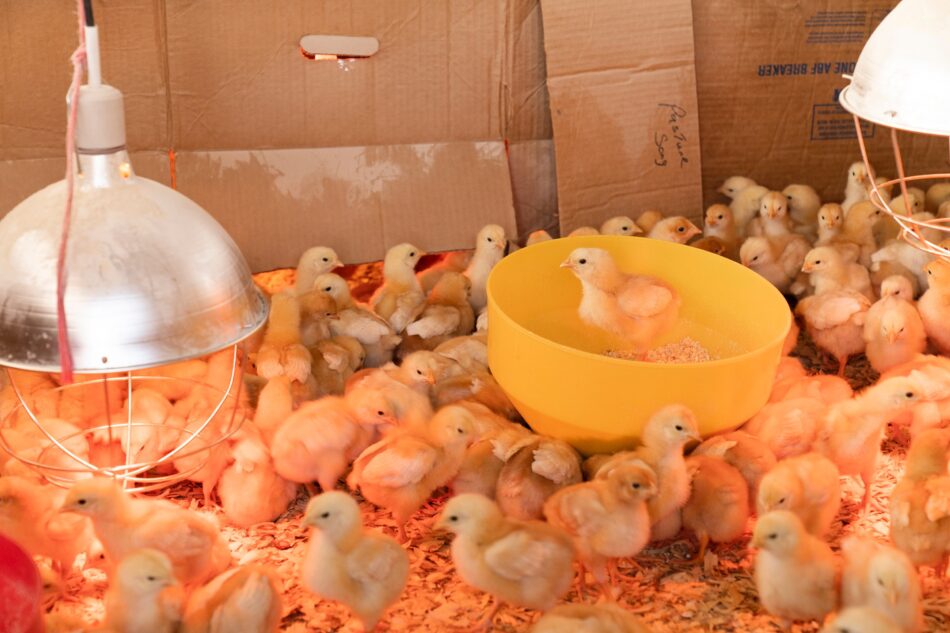
This entry was posted in Chickens
Pride of Omlet series is a collection of amazing stories which shine the spotlight on extraordinary pets and share their selflessness, bravery, talent and compassion with the world.

We have been lucky enough to collect some wonderful stories of your extraordinary pets and share them with you for 10 weeks! Here is a summary of the stories that you can read again and find directly on our Blog.
Pride of Omlet: Stand Up for Disabled Animals

Jerry’s a cheeky, playful and boisterous rescue dog from Romania who can do a handstand! He landed on his feet when Shena gave him a home and inspired her to start a rescue centre specialising in disabled animals. Read the story here!
Pride of Omlet: The Constant Companion
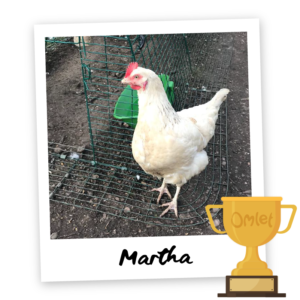
Martha’s humans Nicola and Ben bought chickens to bring joy to Julia, their mother who they cared for at home. The family could never have imagined that a chicken would become a caring companion to Julia in the advanced stages of dementia. Read the story here!
Pride of Omlet: Free Support
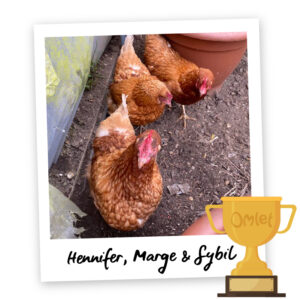
Once caged battery hens, Hennifer Marge and Sybil now work free-range with their human Jonathan, transforming lives for offenders at the Rosemead Project. Jonathan (support worker and chicken champion) believes the hens have the power to unscramble tricky social situations. Read the story here!
Pride of Omlet: A Perfect Match
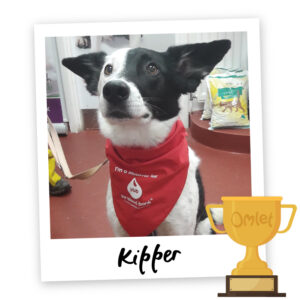
On paper, Kipper wasn’t exactly what Angela wanted. After years of behavioural challenges, he’s become the best-behaved blood donor and saved over forty dog’s lives. Kipper’s turned out to be Angela’s perfect match. Read the story here!
Pride of Omlet: Teachers Pet
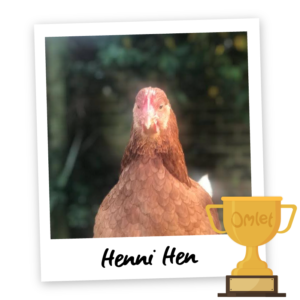
Henni Hen is a teaching assistant by trade. A cute and cuddly chicken who loves children. She follows in the footsteps of her bubbly humans, Hamish and Verity. Read the story here!
Pride of Omlet: Mipit Makes Sense

Mipit is a Mental Health Assistance Dog for his human, Henley. Mipit keeps Henly alive and independent. Who wouldn’t love a dog that can put out your recycling, answer your phone, and be your best friend, come rain or shine? Read the story here!
Pride of Omlet: Perfect Peaky
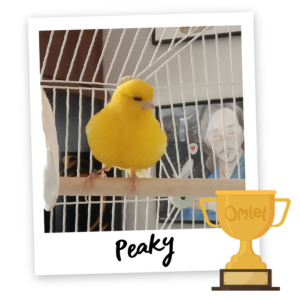
At the tender age of one, Peaky is already a retired filmstar. He had lived in a cage his whole life, released only to perform. When Joana and Fergus took him home, he was a fluffy, yellow bundle of nerves. But they are determined to help Peaky, their cute little canary companion, to come out of his shell. Read the story here!
Pride of Omlet: Saving Sophia’s Life
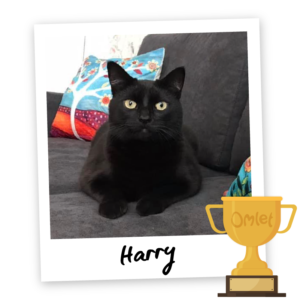
When you’ve grown up with animals, home isn’t home without a pet. Bringing Harry home was lifesaving for both him and his humans, Sarah and daughter Sophia. Harry has a special gift. He’s a unique epilepsy monitor, and he’s saved Sophia’s life countless times. Read the story here!
Pride of Omlet: Buster’s Beard

Buster was destined to chase balls on the beaches of Barry Island. He’s a lovable labradoodle with big brown eyes and a long beard. A thinker with a playful nature, he’s co-authored a children’s book with his human Natalie to bring Autism Awareness to all. Read the story here!
Pride of Omlet: Brave Bunnies

It’s hard to describe how frightened Pixie the rabbit was when the RSPCA rehomed her with an experienced rabbit owner. Eighteen months on, cheeky little Pixie lives in the lap of luxury and is learning to be loved by her adoring human, Wendy. Read the story here!
This entry was posted in Budgies
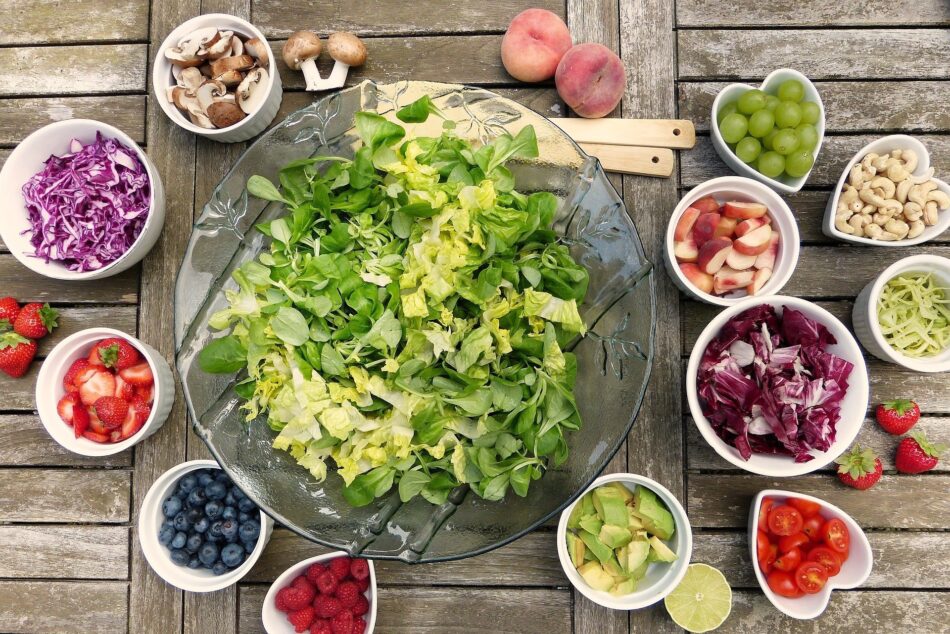
Some pets, including rabbits and guinea pigs, are naturally vegan. Hamsters and gerbils, although omnivorous, can thrive on a vegan diet in which the protein content is supplied by plants and vegetables. Others, including omnivorous dogs and out-and-out carnivore cats, cannot be easily pleased on meat-free diets.
All animals need to have their nutritional needs satisfied. But this does not mean you can’t have a vegan dog. Vegan cats, though, are a lot trickier.
Can my dog have a vegan diet?
 If you were to meet a species of animal for the first time and had to make an accurate guess about its diet, you would get lots of clues by looking at its teeth. The teeth of a dog, like the teeth of a bear, proclaim loud and clear that this animal is an omnivore – that is, one that eats both meat and vegetables. If you think of your dog as a domesticated wolf, you get a good idea of its natural diet.
If you were to meet a species of animal for the first time and had to make an accurate guess about its diet, you would get lots of clues by looking at its teeth. The teeth of a dog, like the teeth of a bear, proclaim loud and clear that this animal is an omnivore – that is, one that eats both meat and vegetables. If you think of your dog as a domesticated wolf, you get a good idea of its natural diet.
However, as the panda proves, a supposed meat-eater can sometimes get by perfectly well on a vegan diet. A panda’s teeth are similar to any other bear’s – long canines for meat-eating and molars for grinding vegetation. And yet pandas don’t eat anything other than bamboo. So, if a bear can be vegan, does that mean you can have a vegan dog?
The answer is yes – but it’s a yes with lots of small print! A dog requires a diet that contains the fats and proteins it would get from meat. It is dangerous to ignore this basic need and simply feed your pet with whatever you please. Some dogs have delicate stomachs at the best of times, and a low-fat, high-fibre diet can cause potentially life-threatening problems. A diet that excludes meat should never be fed to a dog without the advice of a professional pet dietician.
The collagen, elastin and keratin found in meat diets are not easily replaced by vegi equivalents. Your dog will also need the ‘long chain’ omega-3 fats found in animal products such as egg, fish and some meats. Vegan omega-3 fats are not the same as animal-derived ones.
All of which presents a headache for the vegan dog owner. There are, however, products available that claim to let your dog live a healthy, meat-free life. Before you take the plunge, it is essential to seek professional, scientific advice and guidance. Compromise is usually the best choice here – a vegan diet supplemented by some of the animal-derived essentials. Crickets, for example, can provide lots of the amino acids and keratin a vegan diet lacks, and they’re 65% protein.
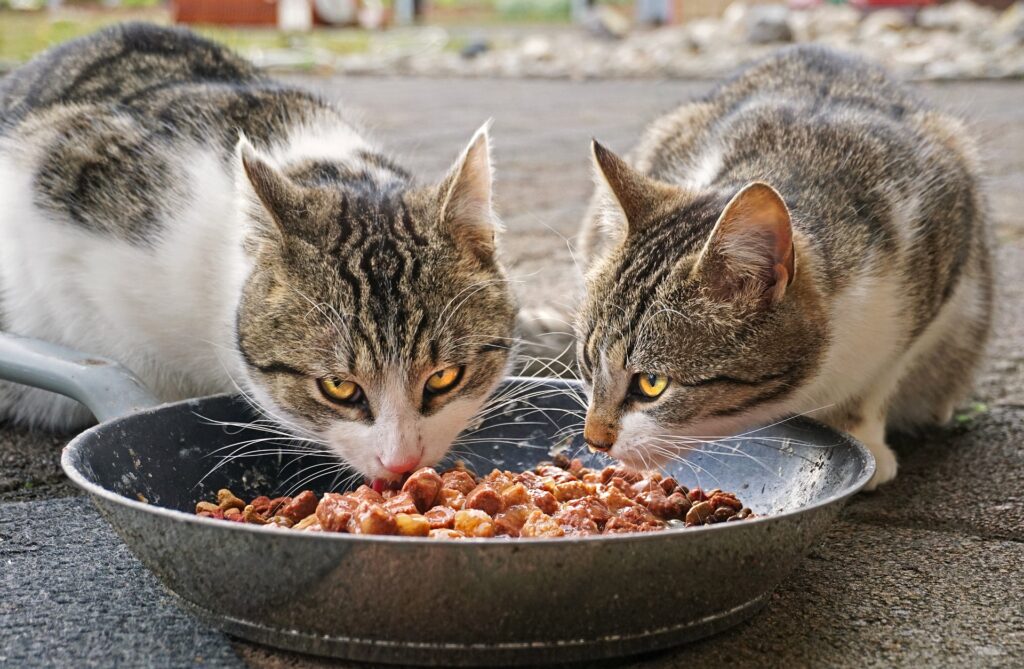
Can my cat have a vegan diet?
The compromise approach is even more important for cats. These are amongst the planet’s true carnivores, obtaining all their dietary requirements from other animals.
The main challenge with minimising the meat in a cat’s diet is that, unlike many mammals (including dogs), cats cannot produce certain proteins. They have to absorb these from the meat and fish in their diet. Amino acids are another issue – cats deficient in the animal-derived amino acid taurine, for example, usually succumb to a specific type of heart problem.
Even a fortified vegan cat food cannot be confidently recommended. Turn the situation on its head, and try to imagine weaning a rabbit onto a meat-only diet, and you get some idea of the challenge – and the ethics – involved.
There are some lab-grown ‘meat’ products in development, with vegan and vegetarian cat owners in mind. However, whether these will arrive – and remain – on the market any time soon is hard to guess.
For many vegan pet owners, there is a huge ethical issue involved in feeding the animals they share a space with. Ethics, however, include the animal’s needs too, and it’s an almost impossible issue to resolve when it comes to cats. If you are able to reduce but not eliminate the meat in your cat’s diet, that’s the safer option.
Top 10 pets for vegan households
There are, of course, plenty of other pets that don’t eat meat, or that eat some meat but can still thrive on a meat-free diet. Here are our ten favourites.
 1. Rabbits. No problems here – rabbits are happy vegans, with diets based on hay and vegetables. You could argue that the soft pellets they eject and then eat are animal products of a sort, but they are simply semi-digested vegetation.
1. Rabbits. No problems here – rabbits are happy vegans, with diets based on hay and vegetables. You could argue that the soft pellets they eject and then eat are animal products of a sort, but they are simply semi-digested vegetation.
2. Guinea pigs. Like rabbits, these wonderful little characters thrive on a 100% vegan diet.
3. Hamsters. As most hamster owners feed their pets with shop-bought hamster food, they may not be able to say exactly what the ingredients of that food are. However, vegetarian and vegan hamster foods are readily available.
4. Gerbils. Like hamsters, gerbils are omnivores that can live happily on a vegan diet. They tend to have rather delicate stomachs, so feeding them with a high-quality pellet mix is essential. Too much fresh stuff can cause problems.
5. Mice. Although they will eat pretty much anything in the wild, mice can thrive on vegan diets; but it is still best to use a food mix prepared specifically for them. This ensures that they will not be deficient in any of the vitamins and minerals they need.

6. Rats. These are the most omnivorous of rodents, but as long as you feed them a vegan mix that has been fortified with all the nutrients they need, they will thrive. Indeed, rats who eat too much animal fat tend to become fat and die prematurely.
7. Chickens. If you watch a free-range hen, it soon becomes clear that she will eat anything – grass, beetles, worms, and everything in your veg patch if you’re not careful! Most chicken feed emulates this mix of plant and animal products. However, it is possible to buy vegan chicken feed, and circumstantial evidence suggests that hens can thrive on it. However, they are likely to produce fewer eggs, and you will not be able to stop them scratching for worms and bugs, no matter how vegan the layers pellets are!
8. Budgies and parrots. Vegans will have no obstacles to face with budgies and parrots, unless the birds are being bred. Egg-brooding female birds need a protein boost, normally delivered via an egg-based food or cooked meat. Vegan alternatives are available, though.
9. Finches. Many finch species enjoy bugs and mealworms as treats, but these are not an essential part of an adult finch’s diet. These birds thrive on a mixture of seeds and fresh vegetables.
10. One for reptile fans. When you think of pet snakes and lizards, you probably have an image of dead mice or doomed crickets. However, there are a few commonly kept pet reptiles that eat a 100% vegan diet, the most popular being the Green iguana. Getting the balance of vegetables just right is very important for the animal’s health, but meat is certainly something you won’t have to worry about.
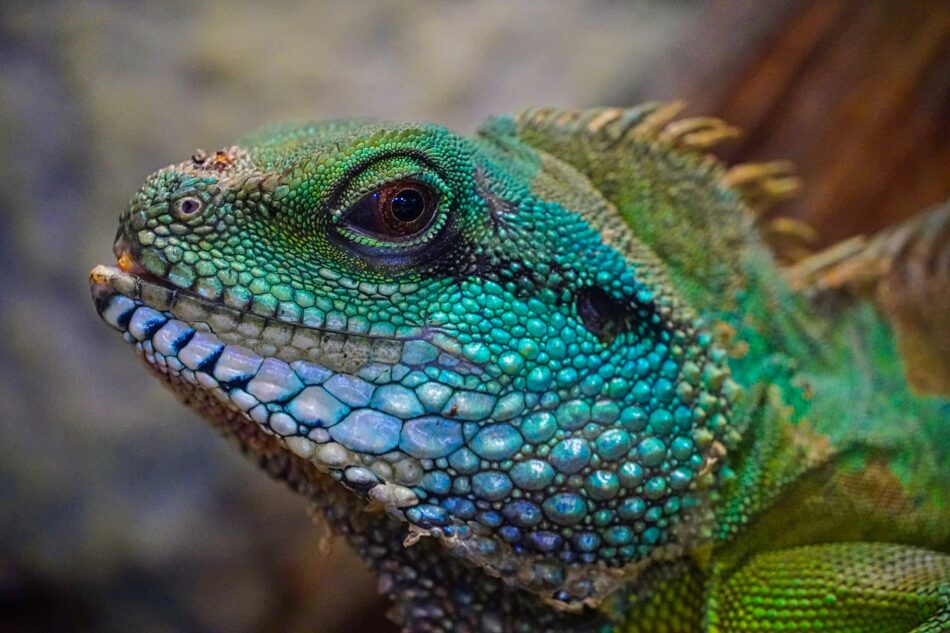
There is no shortage of choice when it comes to vegan pets. Keeping a vegan cat or dog is a much trickier proposition, though. And with all these animals, a balanced diet that matches the pet’s nutritional requirements should be your primary goal.
This entry was posted in Budgies
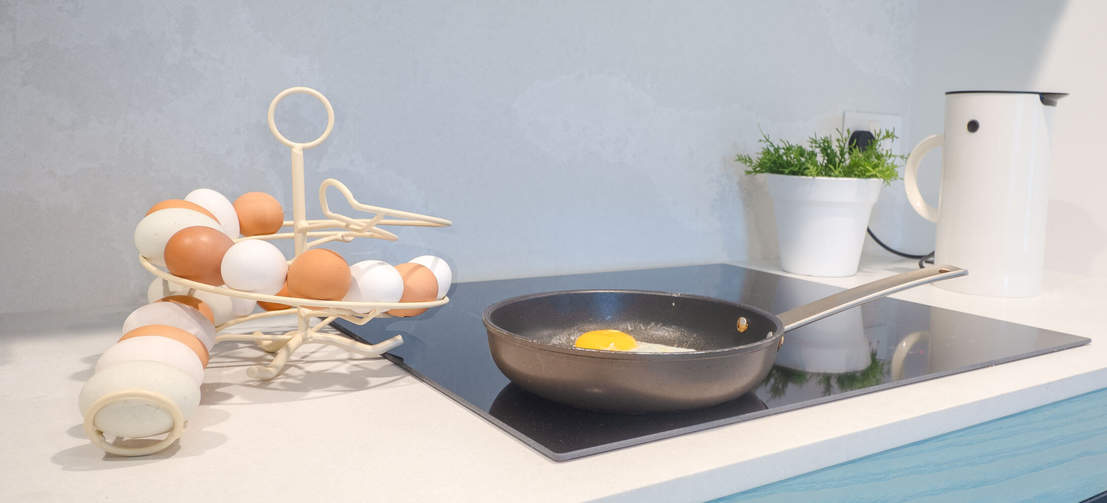
They might be small, but the humble egg is a nutritional powerhouse. Plus, their versatility means they can be used to make thousands of delicious recipes we all know and love. But do you know fact from fiction when it comes to the amazing health benefits of eggs?
Busting the biggest myths
You’re probably not unfamiliar with hearing that eating eggs can cause high cholesterol and can lead to cardiovascular problems. But, the reality of this is actually very different.
While the yolk of a medium egg contains a high level of approximately 186mg cholesterol, the majority of cholesterol is made by the liver as opposed to through diet. Approximately 25% of the cholesterol in the food we eat is absorbed by the intestine and 75% of the cholesterol in the blood is produced by the liver.*
Rather, high cholesterol can be caused by genetics and lifestyle choices like smoking and lack of exercise. This isn’t to say diet is not a contributing factor towards high cholesterol, though. Rather, a diet high in saturated fats such as fried foods, processed meat, and full-fat dairy products should be more of a cause for concern.
Eggs are also not responsible for clogged arteries or cardiovascular problems. It’s actually how you cook your eggs, or what you eat with them that could play more of a role in heart health. Frequently frying your eggs in lashings of butter or serving them alongside fried bacon every morning is more the problem. But, as with anything, moderation is key and you should always consult your doctor for tailored medical advice.
Why eggs are so great
A great source of micro and macronutrients
Whether it’s the yolk or the white, eggs are full of nutrients and vitamins that are useful for your body to function properly. Eggs contain carotenoids, antioxidants that help to fight against age-related diseases, especially eyesight.
Plus, eggs are rich in protein (2 eggs are equivalent to 100g of meat), vitamins A, D, E, K, B2 and N12, as well as phosphorus, magnesium, potassium and minerals, all of which keep your body in perfect working order.
The vitamin B present in eggs helps your brain to function properly, i.e. memory and concentration. Eggs can be consumed during pregnancy, as the nutrients present in eggs, including vitamin B9, help the growth and proper development of the fetus.
Eggs also contain Zinc for hormone regulation and with the proteins and vitamins they provide, eggs are a real ally for your hair. There are many recipes on the internet for caring for your hair with eggs but our favourite is using one egg, a few drops of sweet almond oil (no more than 4) and a spoonful of honey – your hair will thank you! Leave on for 10 minutes and rinse thoroughly.
Low calorie
Did you know that an egg contains only 90 calories? Two eggs at 90 calories each and you can make a low-calorie but very tasty omelet. The appetite-suppressant effect of eggs also makes it a food to include in your meals if you want to feel fuller for longer.
Sweet treat or protein-packed lunch?
Aside from the various health benefits, eggs can be used in many different ways, allowing us to vary our meals. Whether you like eggs fried, boiled, scrambled, in quiche, in cake or in pancakes, there’s something for everyone.
You can find a cake recipe here or why not try out a delicious banana bread? And for the perfect pancake recipe click here.
How to choose your eggs
Nothing beats the taste of freshly laid eggs from your hens. Plus, when your girls are as happy as can be in an Eglu Cube Chicken Coop, they taste even better! The love you put in towards caring for your flock really is returned with their labours of love in the form of tasty eggs. Having them on hand, without worrying about going shopping, is a real pleasure too.
You can even show off your hens’ hard work in the Omlet Egg Skelter. Not only will the beautiful design stand out in your kitchen, but it keeps your eggs neatly arranged in order of laying to ensure that you always use the oldest eggs first, meaning no waste.
But, if you’re yet to experience the joys of chicken-keeping and are purchasing your eggs from the supermarket, here’s what to look out for. Please note that the nutrient content may vary slightly depending on the origin of the eggs you consume. The omega 3 content may be lower if you buy your eggs from a cage farm instead of organic.
A grade eggs – Highest grade of eggs. Intact shells and are internally perfect. Eggs must be graded A for retail and catering.
B grade eggs – Unbroken shell, abnormal shape and staining.
Omlet and your eggs
Eggs have an array of benefits, and when chicken keeping is made so easy with Omlet, why miss out on the delight of having them fresh from your garden? From our Eglu Cube Chicken Coop for super speedy cleaning, Autodoor to put your flock to bed and the Walk In Chicken Run to give your chooks space to roam, shop Omlet’s remarkable range of chicken products, designed in-house by expert chicken keeping, animal loving engineers.
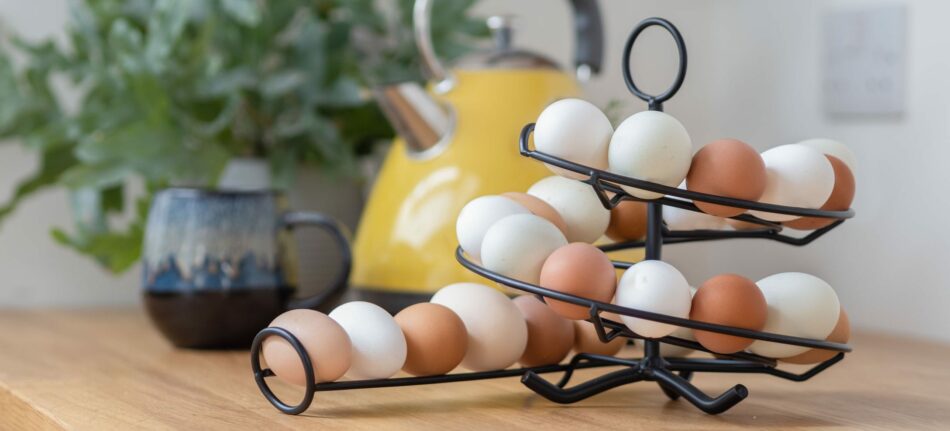
*Cholesterol Overview: LDL, HDL, Triglycerides, What Cholesterol Levels Mean (webmd.com)
This entry was posted in Chickens

This article is a part of our Pride of Omlet series, a collection of amazing stories which shine the spotlight on extraordinary pets and share their selflessness, bravery, talent and compassion with the world.
-Written by Anneliese Paul
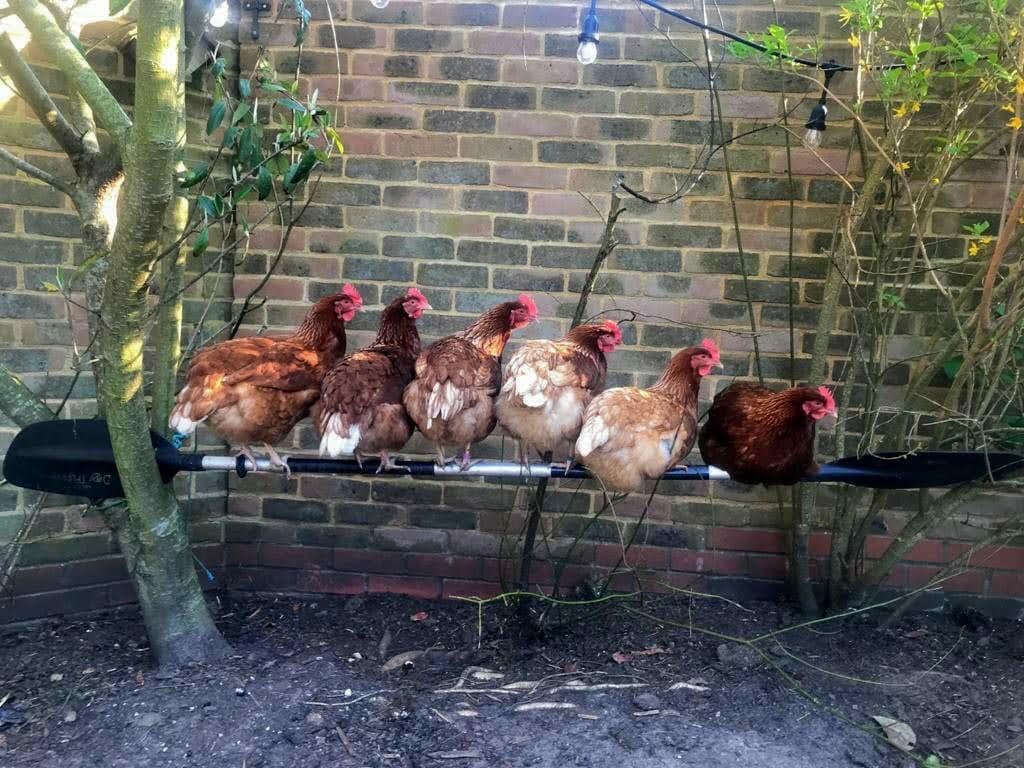
Henni Hen is a teaching assistant by trade. A cute and cuddly chicken who loves children. She follows in the footsteps of her bubbly humans, Hamish and Verity.
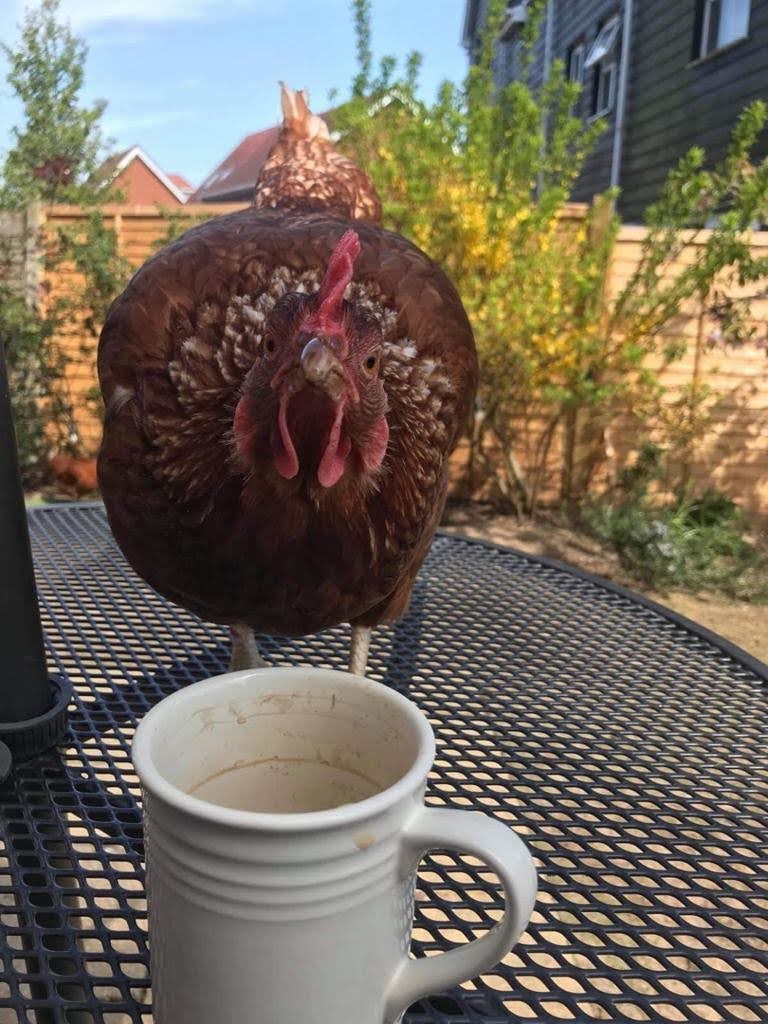
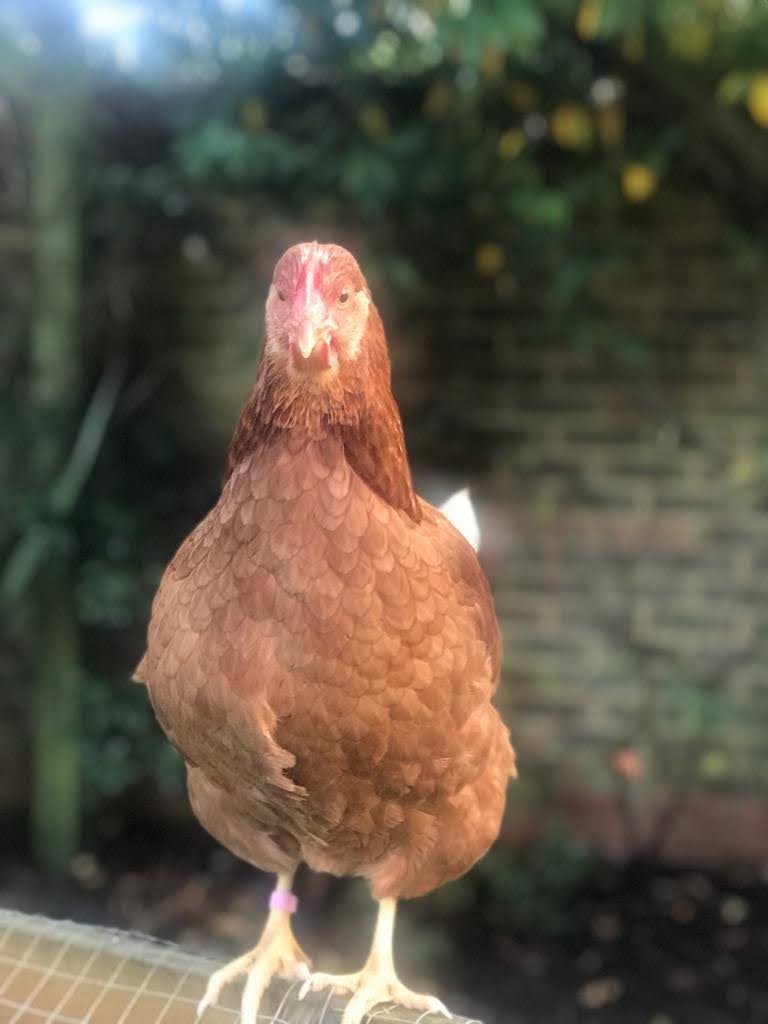
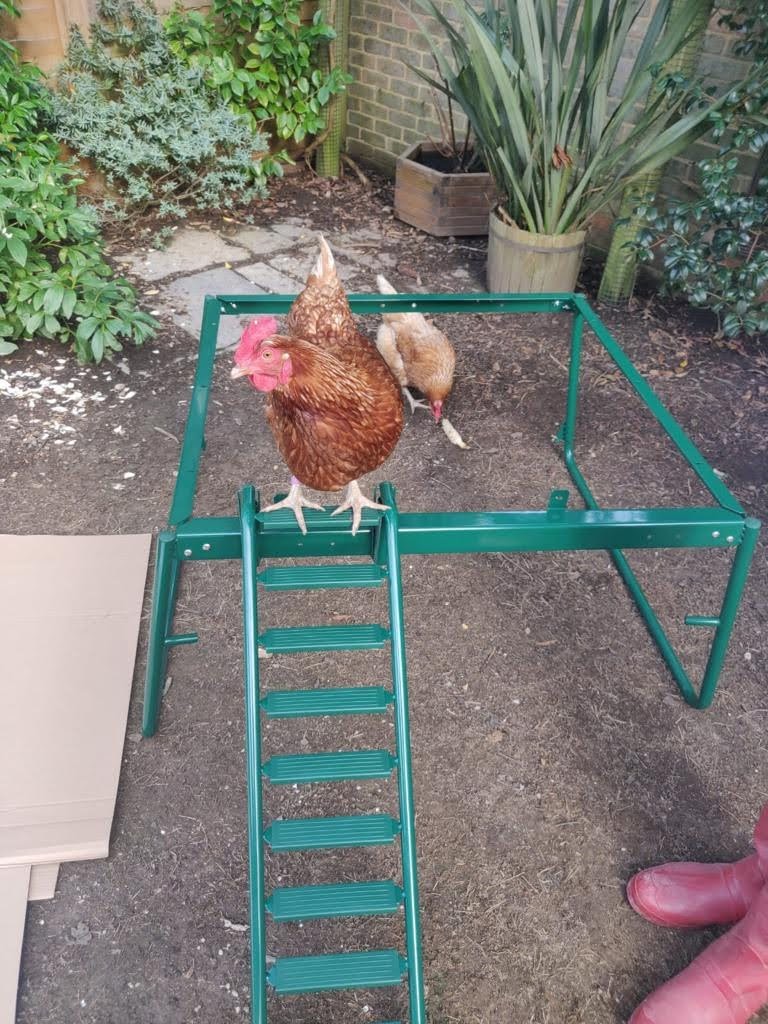
Verity hatches chicks in an incubator every year at the primary school in Kent, where she works as a reception teacher. It’s a highlight for the children in spring, with lots of learning opportunities and fluffy little chicks make Easter even more special.
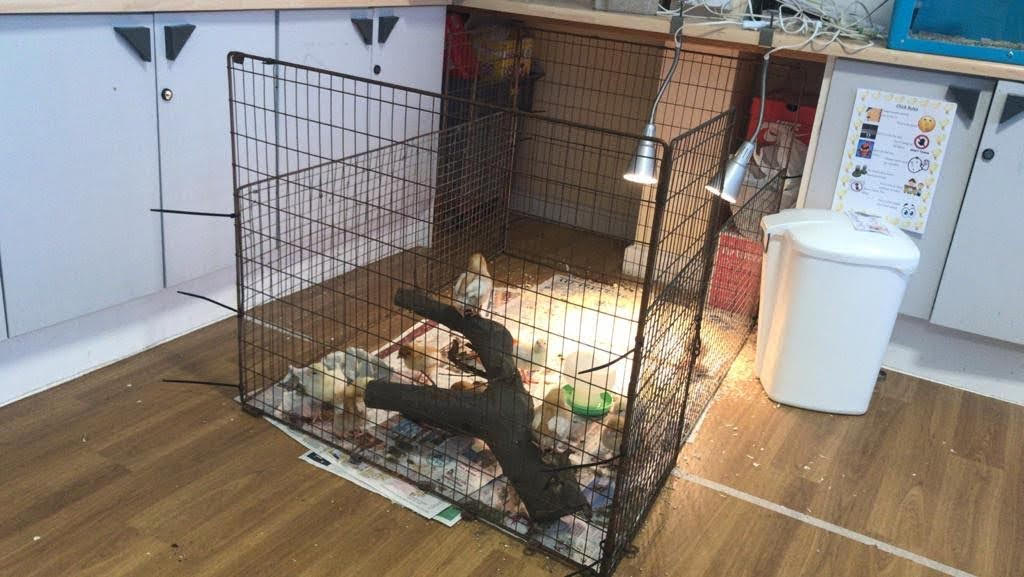
It was natural for Henni to become a teaching assistant at an early age. She was, after all, born in a school. Henni helped the children with topic work and became the subject of many good literacy and science lessons.
But Henni’s talent lies in her ability to help children read. Henni can’t read herself, but children who wouldn’t usually read to an adult began taking Henni to beanbag in a quiet corner where they could get cosy. Henni cuddles up and listens patiently to her young reader, giving the odd encouraging cluck.
When Henni and her sisters became too big for the classroom’s hutch, Verity and Hamish moved into a house with a garden. Instead of rehoming the chicks with local farmers (like they usually did), they decided to take Henni and her sisters home. They’d been talking about getting a dog, but both working full-time, the chickens seemed like a good option.
Most of the time, Henni is outside, like an ordinary chicken, scratching in the garden or getting up as high as she can. But Verity and Hamish potty trained her because she loves coming into the house for a cuddle, and of course, she needs to work.
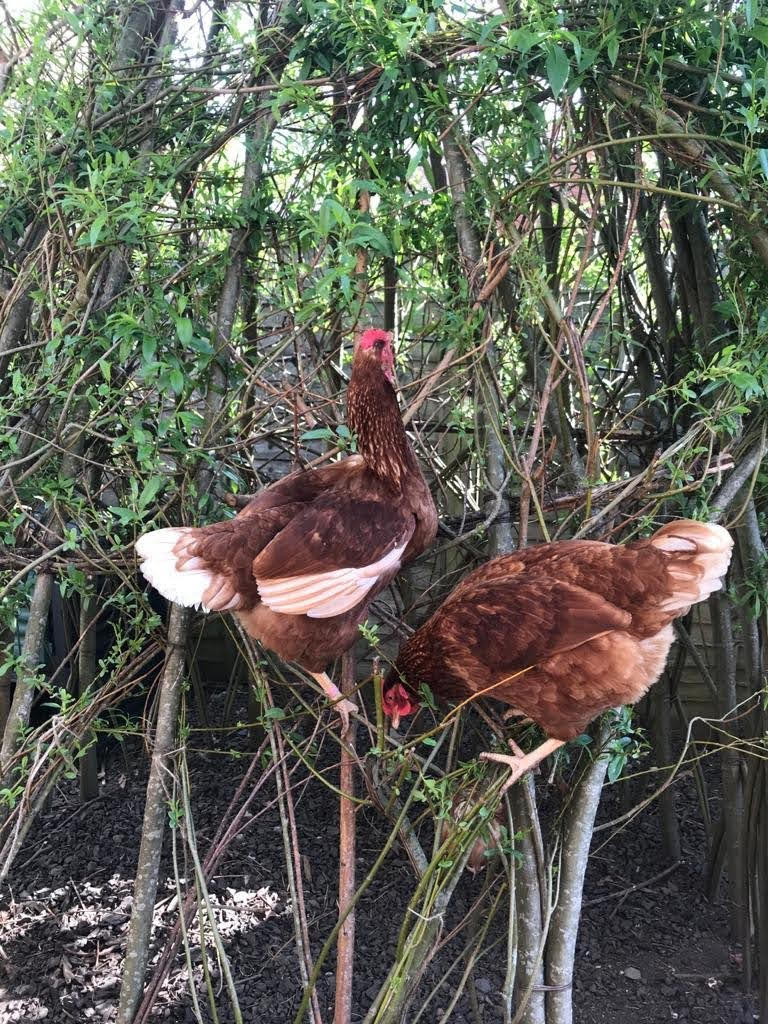
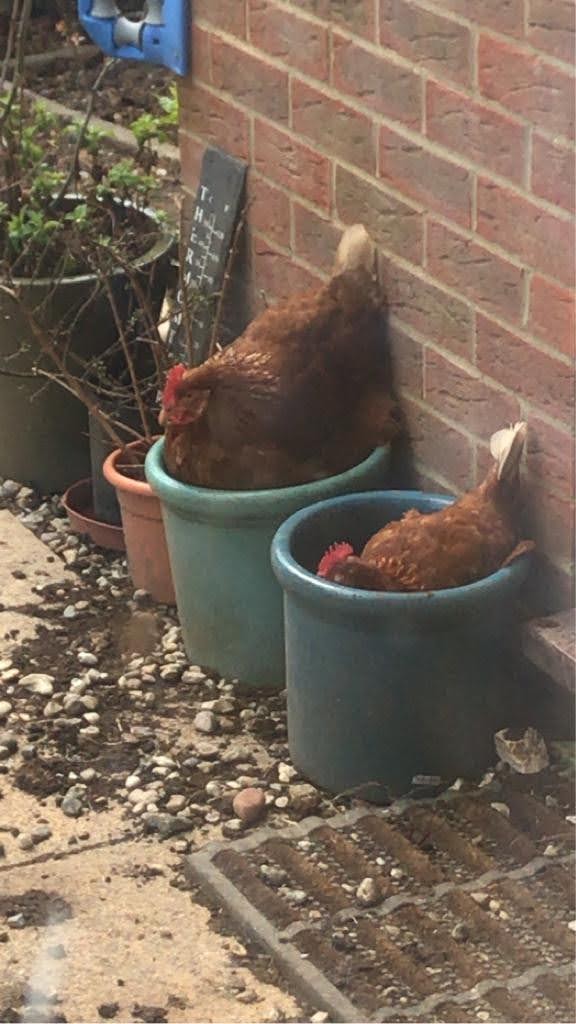
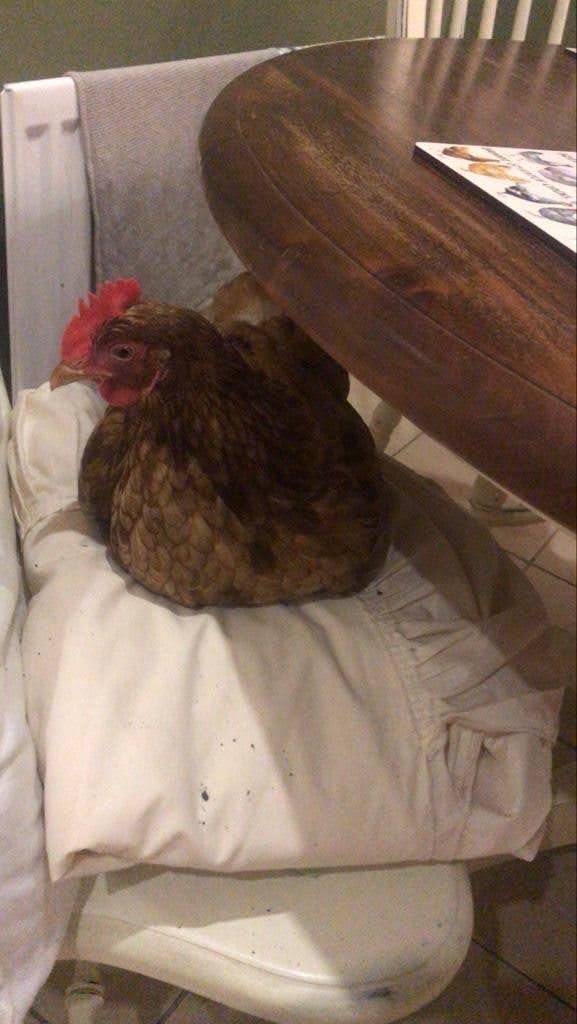
During the lockdown, the children missed holding Henni. So, Henni sprang into action and delivered both live and recorded lessons from the study that she shares with Verity. Verity read children stories, and Henni sat on her shoulder, making sure the children were listening. The deputy head called Verity regularly to make sure Henni’s doing ok.
Being a caring soul, Henni also gave to the community over lockdown. Together, Henni and her sisters lay six eggs a day, so Henni and Verity decided to do a doorstep delivery service for their neighbours. At 10 am, Henni would lay an egg and make a lot of noise about it, so all the neighbours knew when their eggs are ready. Then, Henni would hop onto Verity’s shoulder, and together they delivered eggs to all the houses on their close.
When she returned home, she’d often hop onto her favourite perch (the top of the garage), and the children from the neighbourhood would come over to Verity and Hamish’s to see “the one on the roof!”
Henni and her sisters Megg, Gertie, Margot, Ginger, Rona and Nora used to live in a wooden coop in the garden and come into the garage in winter when it was cold, but Verity and Hamish wanted the best for them. So last year, they got a new home, an Omlet Eglu Cube, and now they’re cosy outside all year round.
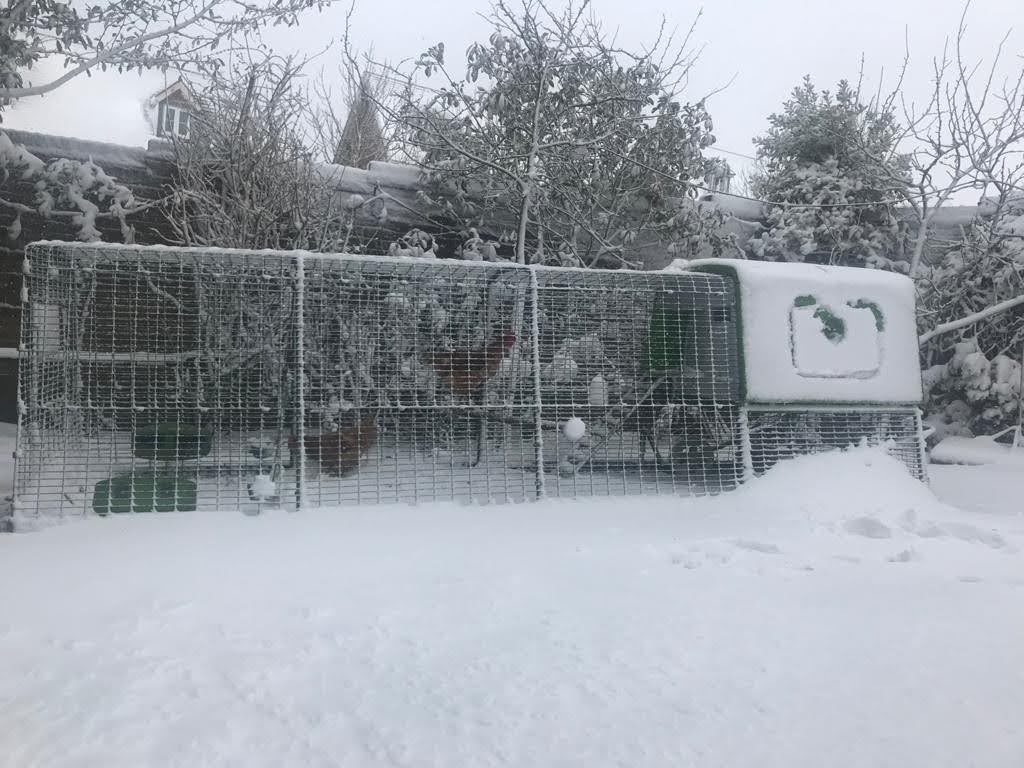
But Henni still likes to come inside for a cuddle and can often be found sitting on the sofa between Verity and Hamish for a family film night after a hard week at work.

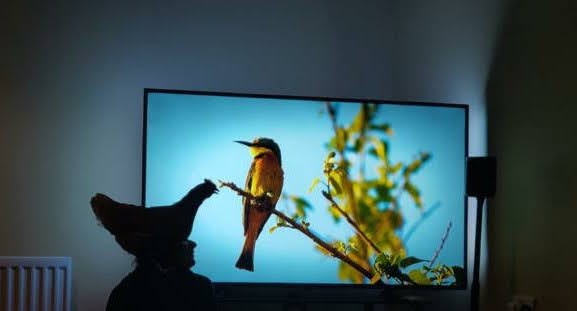
She’s just an ordinary brown chicken, and she’s low in the pecking order, but she’s got high hopes for the world. She’s very special to the children she teaches and the community she lives in, and of course, to her humans Verity and Hamish. She’s worthy of a gold star for an outstanding effort.


This entry was posted in Chickens
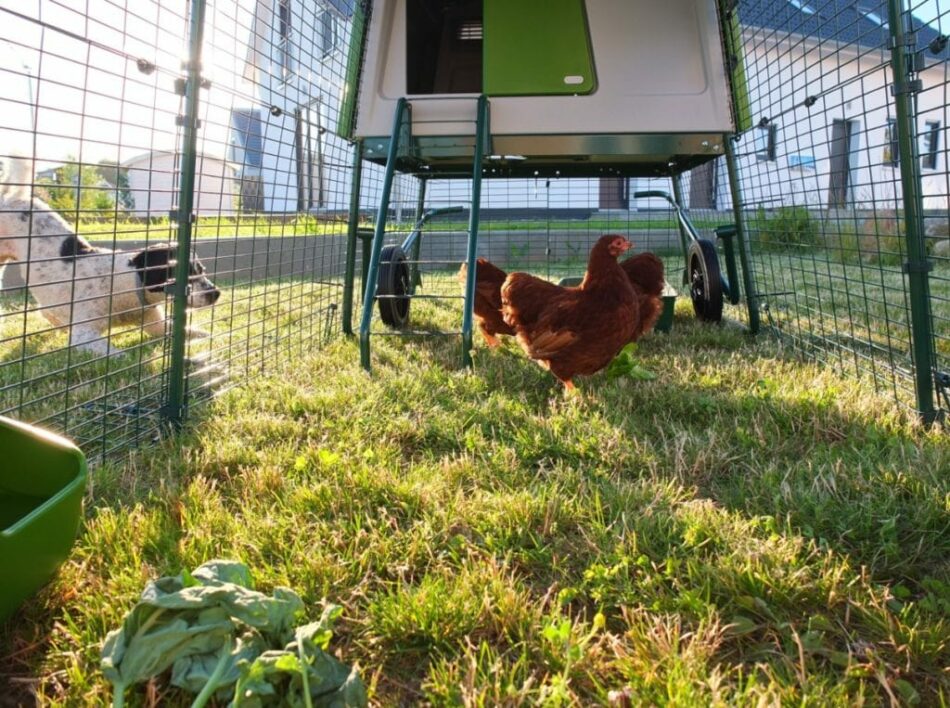
You can keep chickens with other pets when the proper preparations and precautions are in place. Some pets like cats and dogs may have an innate prey drive that chickens can trigger, so it’s important to take introductions slowly to ensure success. With these tips, you’ll be able to confidently introduce your current pets to your chickens, or introduce new pets to your existing flock with confidence.
Keeping chickens with dogs
Dogs are the most common pets in the world, with millions kept as pets across the country. So, if you’re among the many dog owners, adding chickens to your family is possible once you consider your dog’s temperament and trainability.
Assessing your dog
If you’re a dog owner, the first thing to consider is their temperament. Different dog breeds may also react differently to birds as part of their nature. For example, breeds like Labrador Retrievers or German Shorthair Pointers may become easily excited around birds due to their natural hunting and retrieving drives. Other breeds that may have increased prey drives include:
Regardless of their breed, if your dog becomes excited or overly curious around small animals, their behaviour will likely carry over to chickens. If your dog loses their mind over the birds at your backyard feeder, or drags you to investigate the park ducks on your evening walks, they’ll likely stress out your flock – and themselves.
Dogs without a prey drive or with little interest in birds will likely not pose a problem to your chickens, but all dogs react differently when new pets enter their territory. Usually, most dogs will adjust to the new backyard occupants just fine after an acclimation period. You will likely see your dog expressing interest in your chickens at first – hanging around and sniffing the coop. They may even express a desire to interact with your chickens through playful postures and behaviours. Understanding your dog’s body language around your chickens will help you determine what their relationship will be like.
Chickens are prey animals, and can be hurt easily. Dogs cannot play with chickens as they would with other dogs or even other pets. It’s important to teach your pup that chickens are fragile friends – not toys or something to hunt.
Teaching dogs to get along with chickens
Unless leashed walks make your dog overly excited, their first encounter with your chickens should be done with a dog collar and lead. Make sure their collar is tight enough that they don’t slip out, but not so tight that it’s uncomfortable. Walk your dog up to your chickens’ enclosure and let them sniff. Maintain a tight leash until you see your dog’s reaction, and allow the lead more slack slowly to reinforce good behaviour.
Let your dog watch you spend time with your chickens. This should be done with your chickens in the safety of a strong walk in chicken run. If your dog does more than sniff or hang around the run, take a step back and approach their interaction from a different angle.
It could take several weeks for your dog to fully accept your chickens. Some other ways to help your dogs adjust to your chickens include:
- Setting up chicken fencing around the outside of your flock’s run for your dog to observe them at a distance.
- If your dog has a run or playpen, place it next to your chickens’ run and slowly decrease the distance over several days until they are side-by-side.
- Reward your dog with their favourite treats each time they are calm around your chickens.
Make sure to never leave your dog unattended with your chickens – especially in the beginning. Even if they can’t get into the run with them, an excited dog’s barking can easily stress your flock out.
Keeping chickens with cats
Cats are more difficult to train than their canine counterparts, and are decidedly less predictable in their behaviour. But the good news is that most cats don’t see a large hen as potential prey the same way a dog might. Most cat owners will agree that their cats show little to no interest in their chickens. In fact, cats and chickens have a somewhat symbiotic relationship.
Birds and their feed attract rodents, which a cat would much prefer over your hens. So, when your cat is able to patrol your chickens’ surroundings, chances are good that any potential rodent problem will be nipped in the bud.
Some cats may show increased interest in your hens. This largely depends on your cat’s breed and temperament. Cats will pose a greater threat to chicks rather than grown hens, but by keeping your flock in a strong chicken coop and run, you’ll ensure they stay safe from your cat.
Keeping chickens with guinea pigs
It may be tempting to keep some cute cavies in with your chickens, but in reality it’s not wise. Chickens will likely pick on them, and with their short legs, guinea pigs can’t get away from them quickly. Their dietary requirements are also very different, and your chickens may eat your guinea pigs’ food in favor of their own, which means neither animal will be getting the nutrients they need. If you have cavies and want to house them near your chickens, it’s best for them to have their own guinea pig hutch and run.
Keeping chickens with rabbits
Rabbits on the other hand are fast enough to fend for themselves against chickens, and if raised together from a young age, can do well around chickens. Still, they require their own dietary needs and clean sleeping quarters. They don’t roost like chickens, so they’ll need their own burrowing space in the run or under the coop.
The easiest way to achieve this is by adding walk in chicken run partitions. This will allow you to create “rooms” for each species to ensure they all get what they need. You can open the partition doors to allow everyone to be together whenever you’d like, or create a third space as a common area.
Remember to try to give each species as much space as possible in their respective areas to make them feel safe and comfortable.
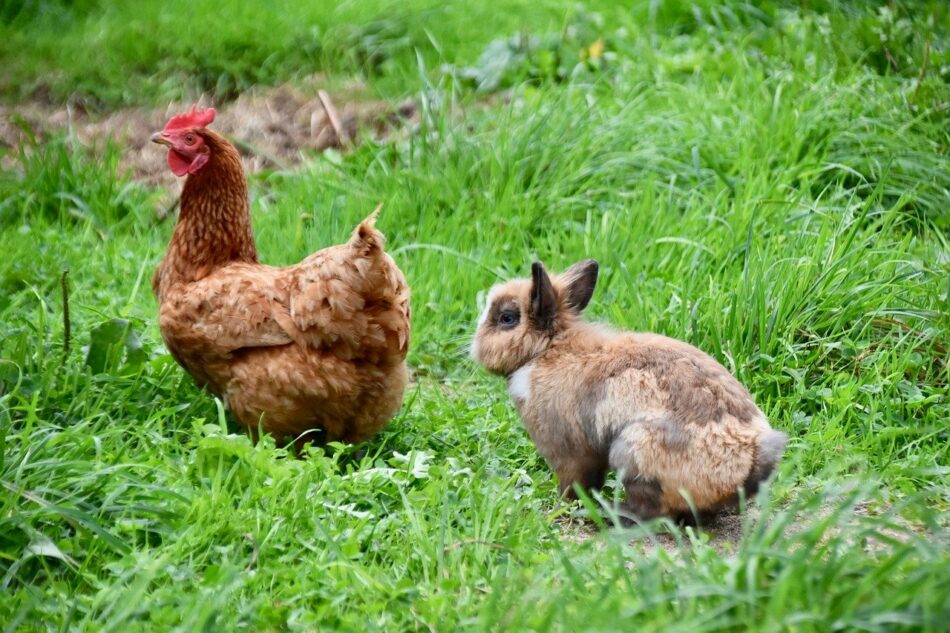
Chickens and other pets
Chickens can also mix happily with goats, and with female ducks (males will tends to bully them). Ironically, they do not mix with birds in an aviary. They will eat anything that falls to the aviary floor, but they will also happily peck the other birds whenever they can and may attract rats and mice, which will cause problems for the smaller birds.
If you live in a rural setting, you can keep chickens with other barnyard animals. Chickens mix happily with:
- Goats
- Sheep
- Cows
- Alpacas or llamas
- Pigs
- Female ducks, guinea fowl, peacocks, geese, or pheasants
Any other avian species kept with chickens should be docile and preferably female, as males can bully hens. Smaller birds like quail or pigeons will likely get pecked at by chickens, so it’s best to stick with larger birds as run-mates. Small pets like hamsters, gerbils, turtles, or frogs should never be kept with chickens – they will be pecked at and killed.
Omlet and your pets
Omlet has all of the pet products you need to keep your furry and feathered family members healthy and happy. Having multiple types of pets is exciting, and through our line of chicken coops, chicken runs, and walk in run partitions, you’ll be able to create a safe haven for all of your animals to enjoy. And, by knowing that Omlet products are protecting your flock, you can rest easy knowing that you’ve provided them with the best chicken housing solutions available.
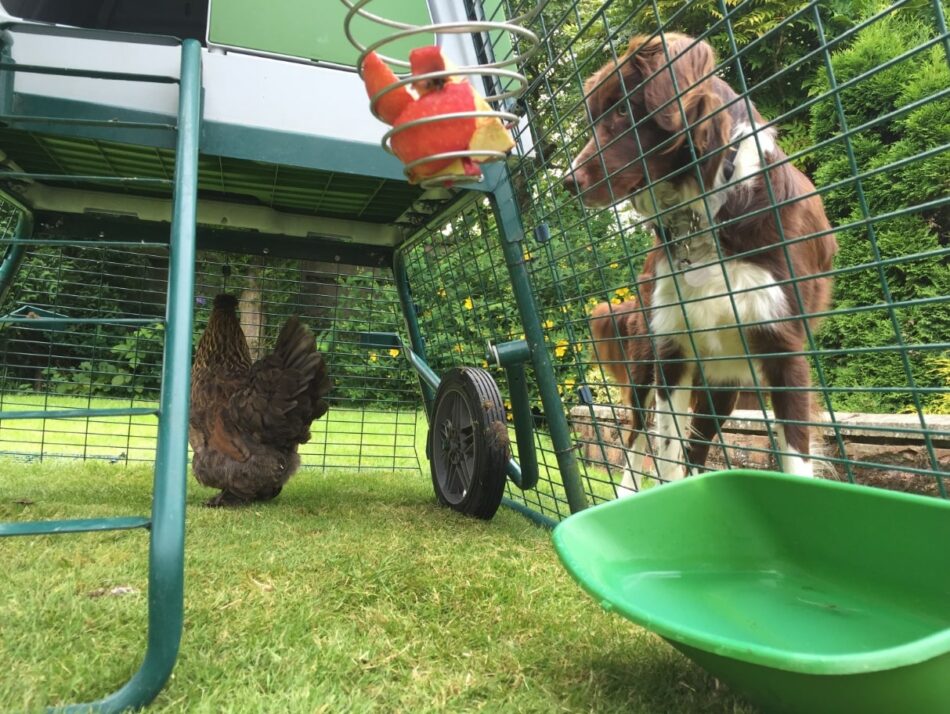

This entry was posted in Budgies

This article is a part of our Pride of Omlet series, a collection of amazing stories which shine the spotlight on extraordinary pets and share their selflessness, bravery, talent and compassion with the world.
-Written by Anneliese Paul
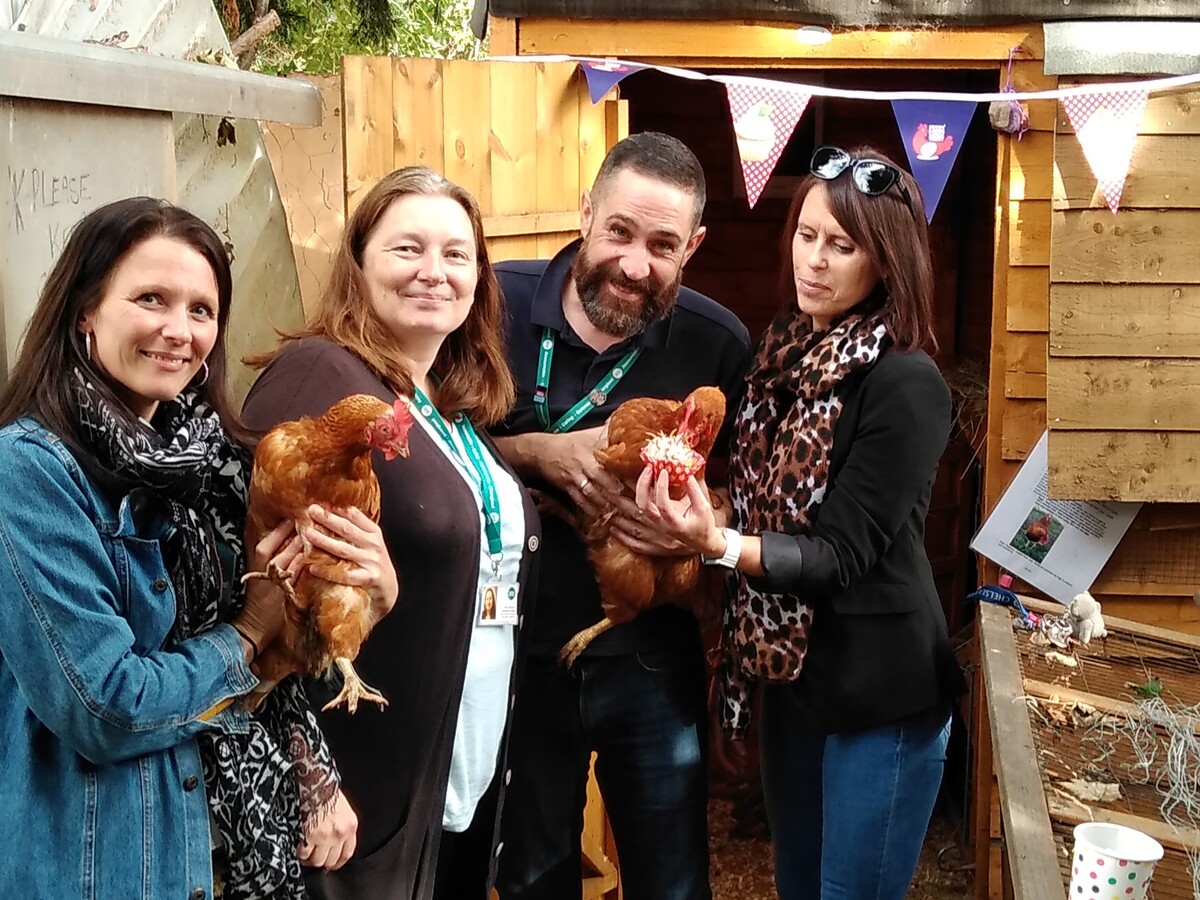
Once caged battery hens, Hennifer Marge and Sybil now work free-range with their human Jonathan, transforming lives for offenders at the Rosemead Project. Jonathan (support worker and chicken champion) believes the hens have the power to unscramble tricky social situations.
The Rosemead Project is a residential home in Southend on Sea that exists to get people in need of support on the right path, by learning independent living skills to transform their lives. Six years ago, Southend council granted the project funding to transform the garden. They installed a polytunnel, created raised beds and planted fruit trees.
Jonathan introduced chickens to the garden. The ex-battery hens arrived in a sorry state, malnourished with large patches of missing feathers and pale, floppy combs. But within a few weeks of scratching in the garden and the compost heaps, they were on the road to recovery.
When residents arrive, often from homelessness or prison, they are welcomed into their bedroom, and a bowl containing two eggs sits on the side table with a note that says ‘Welcome from Hennifer, Marge and Sybil’.
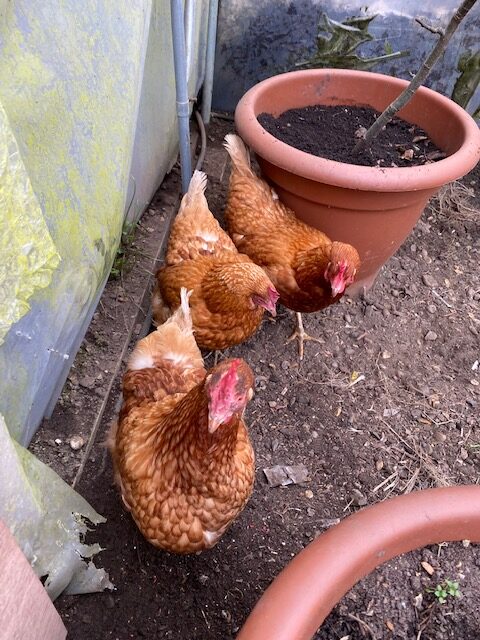
Jonathan uses eggs to teach residents how to cook simple meals, like omelettes. He’s put posters up in the communal kitchen with recipes showing different ways of cooking eggs. And the eggs have also become currency, cracking once tricky relationships with neighbours. After an anti-social behaviour incident, Jonathan visited Jean, one of the elderly neighbours who was nervous about the project. He took eggs and found that they were a good conversation starter.
It was all going well when a fox came. Doris, the mother hen of their original flock, ran towards the fox to protect the rest of them and was left dead. She’s buried in the garden and a lot of the residents were affected by the attack. So on his next egg delivery to Jean, Jonathan told her about the fox and said he would get some more chickens from the British Hen Welfare Trust. Jean came with him and got some hens too. It was a positive moment.
Hennifer, Marge and Sybil arrived, freed from their horrific caged lives. They’ve been with the project for two and a half years now and are the best-feathered support workers Jonathans ever met. Hennifer is confident, Sybil inquisitive, and Marge is really chilled. She can often be found under the lavender bush.
Residents typically stay with the project for two years before going on to independent living, but the path isn’t always smooth, and occasionally, they are sent back to prison. When this happened to one resident, he contacted the Rosemead Project (through his family) to ask if they could send photos of the chickens, they become an important support to many people living at Rosemead.
Another resident says he loves the sound of chickens clucking when he wakes up. It takes him back to a happy place. And another has taken charge and gets up at 7am every morning to let the hens out. Either sitting or working in the garden, the hens build resident’s confidence. “The hens don’t run away from them. That’s important,” says Jonathan.
Some residents like to buy treats for the chickens, which may seem like a small thing, but when it’s a choice between lager or mealworms and they’re choosing mealworms. It’s a good sign. There’s a trail of jobs that come from the hens that’s good for building life skills and the cleaning and care that goes into looking after a pet provides a sense of responsibility.
Jonathan says, “Sometimes, it’s hard to find positives in this job, but it’s a good thing to give something a quality of life, and the chickens are one of the little things that put a big smile on your face.”



This entry was posted in Chickens
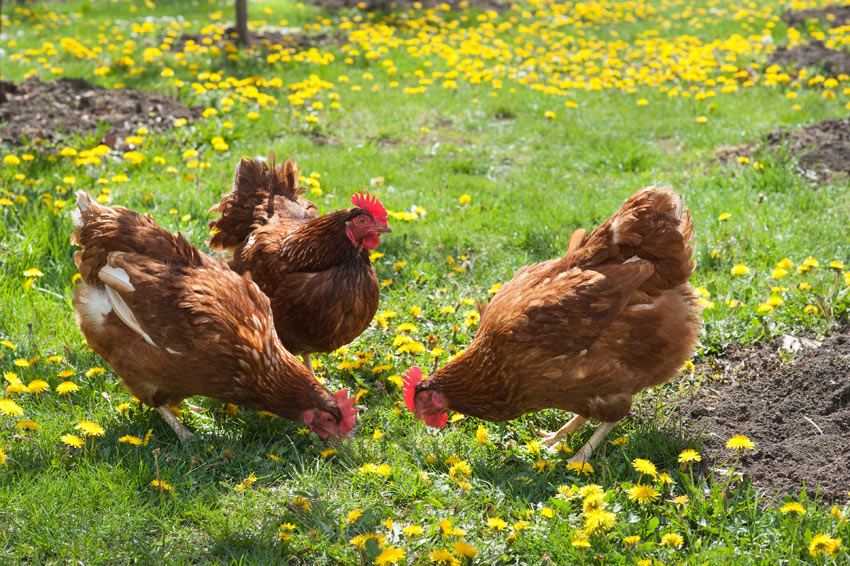 Spring is the perfect time of year to set up a chicken coop and bring home new hens! As your garden begins to stir from its winter slumber, your chickens will benefit from the first fresh greens that become available – essential to your hens’ diets. As well as this, the warmer and longer days mean that your chickens will start producing more eggs again after the winter lull. Furthermore, raising chickens in the gentler climate of the season also means that you’ll have a happier and livelier flock!
Spring is the perfect time of year to set up a chicken coop and bring home new hens! As your garden begins to stir from its winter slumber, your chickens will benefit from the first fresh greens that become available – essential to your hens’ diets. As well as this, the warmer and longer days mean that your chickens will start producing more eggs again after the winter lull. Furthermore, raising chickens in the gentler climate of the season also means that you’ll have a happier and livelier flock!
When Should I Buy Point of Lay Chickens?
Have you ever heard of the term ‘spring chicken’? Well, it actually stems from its literal meaning when in the early 1700s, farmers realised that chickens born in spring were being bought at better prices than those who had already been through their first winter. Most breeders now hatch eggs in December and January, so spring is the time of the year when point of lay, or ‘spring chickens’, become available.
A point of lay chicken is a hen approximately between 16 and 22 weeks old that is just about to begin laying its first eggs, hence ‘point of lay’. This is a good time to get hens, as they are old enough to take care of themselves, but happy to be moved and introduced to a new home. When point of lay occurs, however, can vary somewhat between breeds and other external circumstances. For example, larger hens such as Orpingtons will not reach their point of lay potentially until they are 26 weeks old. For further information on when your hens will begin laying, have a read of our previous blog.
How Long Will Spring Chickens Produce Eggs For?
Having fresh delicious eggs is one of the main reasons why many chicken keepers decide to keep hens to begin with. Therefore, choosing the right time of year to get chickens is something to consider to ensure that you have a frequent supply of eggs for as long as possible.
Chickens will stop laying when they are around six years old, with egg production becoming more infrequent as your hen gets older. Bringing hens home during spring when your chickens are at the very beginning of their laying lives will give you at least three years of dependable egg production. To give your hens a helping hand with their egg supply, you should supplement their diet with plenty of calcium to strengthen the quality of their eggs. An Egg Shell Improver is a perfect way to get this essential mineral in for your flock!
Spring Means Happy, Healthy Chickens!
Now, this isn’t to say that your chickens will be unhappy should you get them during any other season that isn’t spring- far from it in fact. If you prepare accordingly for more extreme weather that other seasons bring, your flock can flourish any time of the year.
However, spring makes raising chickens that little bit easier. The season follows on from a cold winter when your flock would have had less grass to peck at and have spent more time cooped up as opposed to out in their runs or running free-range. Furthermore, the wintertime means that just like us, some chickens with a weak constitution can be more vulnerable to illness, whilst in summer your flock needs that extra bit of help to stay cool. The spring climate on the other hand is just right! Nevertheless, there are some other advantages to getting chickens during winter, autumn, and summer, which we’ll discuss later in the blog.
Red Mite Control
Something to be aware of as a prospective chicken keeper when getting hens in spring is red mite. Red mites can be a problem in chicken coops but fortunately, their numbers drop drastically in the winter. Early spring, therefore, is a good time to spray your chicken coop and run against these tiny blood-sucking creatures before the warmer weather causes a population boom.
Red mites love traditional wooden coops, with plenty of nooks and crannies for them to get into. Should you run into a problem with red mites in your coop, a suitable mite spray should do the job. However, an even better year-round preventative action is to give your spring chickens a coop that is practically mite-free. Keeping chickens in a state-of-the-art plastic chicken coop such as the Eglu range gives these pests nowhere to hide. Since the Omlet Eglu Coops can easily be washed in a few simple steps, red mites don’t stand a chance!
While you’re zapping the red mites, spring is also the best time of year to treat hens for parasitic worms. You should also continue to give them their regular chicken general health check during this season. Again, there are relatively few of these parasites in the environment at the end of winter, so treating the chickens now is a great preventative measure.
Hatching Chicks in Spring
Now we’ve established that spring is the perfect time of year to get point of lay hens, can the same be said about buying baby chicks, or even hatching them yourself? Deciding whether you should get/hatch baby chicks over choosing a slightly older point of lay pullet is dependent on what your priorities are as a chicken keeper.
As we discovered, should you opt to get a point of lay hen over this season, then they’ll of course be ready to start laying during the spring and summer when we have the most daylight. This is something to bear in mind as if you hatch/buy a baby chick in spring, you could be waiting six months before they’ll produce their first egg. For example, if you hatch an egg in April, it might not be until October when they begin egg laying, and with fewer daylight hours, chickens produce fewer eggs.
This being said, spring is still a very popular time to get baby chicks for many chicken keepers. Other than how utterly adorable they are, raising chicks is also an incredibly rewarding process, watching them grow up from the very beginning. More specifically why spring is a great time to raise chicks is because you have the advantage of warmer, but not too hot, weather. When your chicks have reached four to five weeks, they can be moved permanently to their outdoor chicken run, so your young chicks can enjoy plenty of time having fun in the sunshine that winter chicks would miss out on until they’re older.
If you decide that you would like to hatch chicks, Omlet has a wide range of supplies and guides to help you along your journey, from incubation and beyond. Take a look at our Incubation and Rearing equipment or have a read of our Step by Step Guide to Hatching Chicks blog for some tips on where to begin.
Expanding Your Flock With New Breeds in Spring
If you’ve been chicken keeping for a while now and considering introducing a few new birds to your flock, then spring is the ideal season to expand! Should you expand your flock with purebred chickens, they will generally only lay between spring and autumn, making this season the perfect time to maximise egg laying for the year ahead.
Whilst general advice says to keep your flock the same breed, this doesn’t necessarily have to be the case. A range of chicken breeds can live in harmony, what’s more important is that they are of a similar age and size. Furthermore, having an understanding of the personalities of your existing flock and the traits of the breeds you plan on introducing is something else to consider, to ensure they don’t clash.
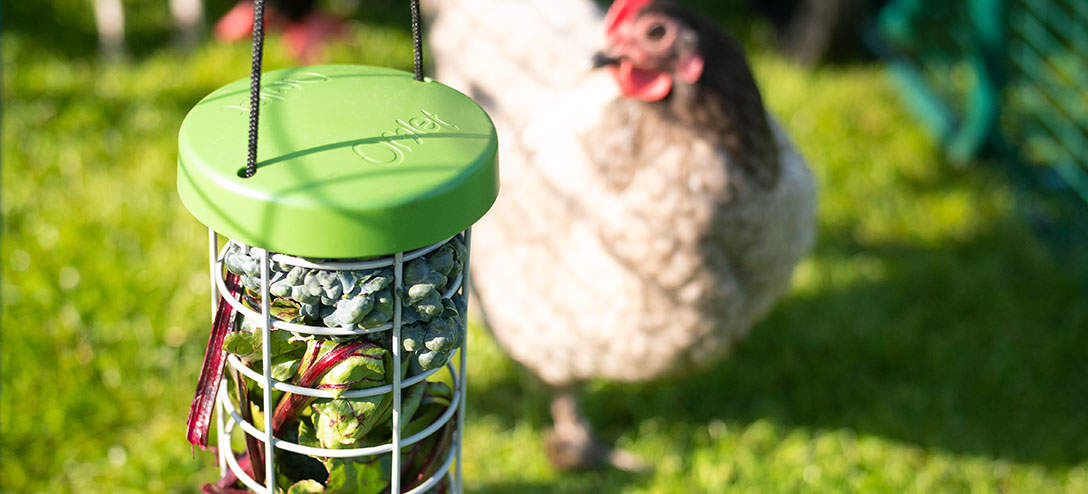
Summer Chickens
If you’re rehousing barn hens as opposed to point of lay chickens, summer is a great time to do so. Whilst rehomed barn hens will enjoy all that spring has to offer, they also enjoy a bit more sun where they can live happily as newly-liberated chickens! Ex-barn hens (and ex-battery hens too, in parts of the world where batteries are still allowed) make great pets. In spite of having been ‘retired’ by their former owners, they will have up to two years of good laying left. In the UK, you can collect these birds via an organisation such as the British Hen Welfare Trust (www.bhwt.org.uk). The advantage of this is that all the hens have been screened for good health, and you will never knowingly be given an unhealthy bird.
Another advantage of getting chickens in summer is that if you let your hens free range in the garden during this time, they will pick off pests such as slugs and flies. However, just be mindful that as chickens are very partial to tender young plants, you may want to protect young shoots and flower beds.
If you do opt to get any chicken, be it rehomed hens or baby chicks, during this time of year, you need to be sure to keep them protected from any extreme temperatures. The hot weather, therefore, is one potential drawback of getting chickens in summer as opposed to in the spring. If you live in an area that experiences particularly hot summers, make sure your birds have plenty of shade and a well-ventilated coop. Fortunately, the Omlet Eglu Chicken Coops are perfect for keeping your flock cool and with an Eglu Coop Weather Protection shield, you’ll be able to provide a shaded environment for your chickens all day long. Take a look at our guide Keeping Happy, Healthy Hens in Summer for a bit more guidance on keeping chickens over this season.
Autumn and Winter Chickens
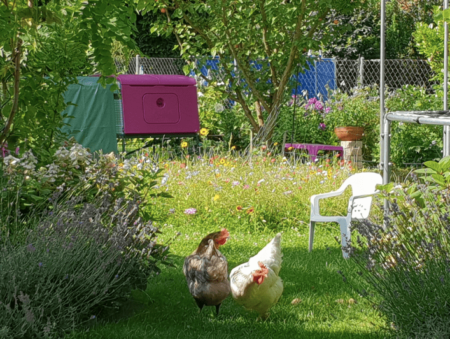 Autumn is another great season for chickens and chicken keepers. There are lots of juicy bugs to scratch for in the still-soft ground and leaf litter, and if you have any fruit trees, there are rich pickings for the birds in the shape of windfalls.
Autumn is another great season for chickens and chicken keepers. There are lots of juicy bugs to scratch for in the still-soft ground and leaf litter, and if you have any fruit trees, there are rich pickings for the birds in the shape of windfalls.
Hens often moult in the autumn, so they need a good diet to help them stay healthy and grow new feathers. Extra chicken vitamins and minerals will support them, and a little apple cider vinegar in their water will aid in ensuring they maintain a healthy, glossy new plumage.
Most chickens don’t mind the colder temperatures of winter at all. However, they do prefer not to get wet, so it’s a good idea to provide a bit of extra protection with a cover for the coop. Unless you live in a particularly cold climate, your chickens will rarely get too chilly. They are hardy birds (with the exception of some of the more delicate, decorative breeds), and will adapt to the climate. Nonetheless, it’s always a good idea to assist them wherever you can. The Omlet Eglu Extreme Temperature Protection range is great for harsher winters, offering that extra level of insulation for your flock. An insulated chicken coop such as the Eglu will also go a long way towards ensuring your birds’ health and happiness in the winter months.
Something else to note over this season is that your run will get a bit muddy! A top tip to prevent this as much as you can is to cover the ground with bark chippings. If you need a bit more help on chicken keeping in the winter, read our Winter Chicken Keeping FAQ blog.
The takeaway message here is that spring is an ideal time to introduce new hens to your garden. However, this shouldn’t discourage you as a prospective chicken keeper from getting chickens any other time of the year. With the right care and equipment, your flock can thrive in any season!
This entry was posted in Chickens

This article is a part of our Pride of Omlet series, a collection of amazing stories which shine the spotlight on extraordinary pets and share their selflessness, bravery, talent and compassion with the world.
-Written by Anneliese Paul



Martha’s humans Nicola and Ben bought chickens to bring joy to Julia, their mother who they cared for at home. The family could never have imagined that a chicken would become a caring companion to Julia in the advanced stages of dementia.
Julia used to have chickens as a child. She fondly told Nicola stories about dressing up the chickens and wheeling them around the garden, like babies in her toy pram. But it wasn’t until her 90th birthday that Julia owned chickens again. It was a dream come true.

Nicola and Ben always thought they didn’t have enough space in their bungalow garden, but whilst visiting relatives in Ireland, Ben saw an Omlet ad and brought it home to show Nicola. “That’s just what we need,” she said. Their Eglu arrived soon after, and then their two hybrid chickens moved in. Julia named them Martha and Mary.
Whilst Mary was always shy and kept her distance. From day one Martha ran to Julia, Nicola’s mum. “She was mums best friend from the beginning,” says Nicola.
Unfortunately, Mary died and then there was a near miss for Martha. Like most people, the family like to let their hens roam free in the garden for a bit, but one day a fox came into the garden and attacked Martha. Nicola and Ben heard her squawking and went to the window. The fox saw them and ran, leaving poor Martha very shaken and suffering from a broken wing. But Matha was brave, and luckily the wing has completely healed. Now Ben and Nicola have extended the run so the chickens only come out when they’re in the garden.
When it was sunny, Julia liked to sit outside in the sun watching Martha. Julia had to use a wheelchair, and Martha would jump (in a very ladylike way) onto the footrest to warm her feet. Last summer when Julia could no longer speak in sentences, she’d make gentle noises and Martha would answer back. She’d sit for hours by the wheelchair with Julia, having quiet conversations.
Nicola couldn’t deny Martha had a human quality. She didn’t just come for crumbs because she was there when there weren’t any. Martha cared.
“She went from a chicken, running around the garden then in those moments with mum, it was like she knew. It was beautiful.”
Nicola began to trust Martha to squawk loudly if something was wrong. When she went into the house to make a cup of tea, she’d leave Julia in the garden with Martha.
“It was weird,” says Nicola “ Martha would squawk, and I’d go out to find Mum had dropped something, or something had fallen off the table, or Mum was confused because she didn’t remember where I was.”

Martha was the thing that made Julia smile every time, and her eggs brought so much joy to Julia in the advanced stages of dementia. Boiled was her favourite, and Martha would let them all know when it was ready to be collected. When Martha lays an egg, she stands at the edge of the run and squawks and squawks as if to say, “Come and get my egg!”
Julia loved holding Martha’s warm eggs. Once, when Julia was having a lie-in, Nicola took her the freshly laid egg. She’d just woken up, and a big smile spread across her face, then she fell asleep again holding it. A couple of hours later, Nicola went to wake her up. Julia sat up. All of a sudden, the egg rolled out from behind her as if she’d laid it on the bed. Incredibly it was completely intact. “Are you laying eggs now?” asked Nicola. Julia understood, and that made them all laugh. It was the happiest occasion, just an egg rolling along the sheet. Julia kept the egg in her hand for the rest of the day. Moments like that are precious memories to Nicola and Ben.
Sadly, Julia died in September. When Julia was alive, it was Mum and Martha, Nicola says. She never thought she’d take to chickens. But having seen how Martha cared, chickens have become constant companions.
“ I think we’ll probably always have chickens because they get under your skin. Well, no, that’s a bad expression. They become part of you. They’re like a little family.”



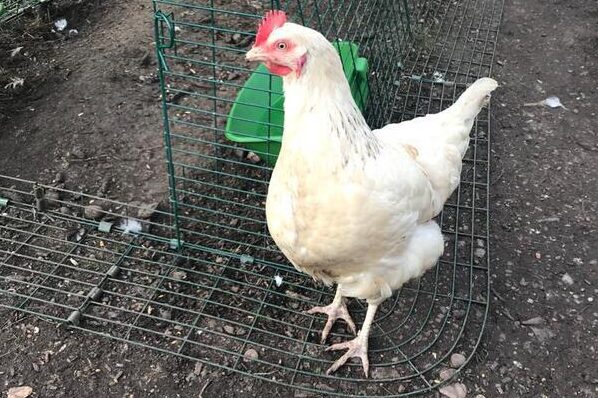
This entry was posted in Chickens
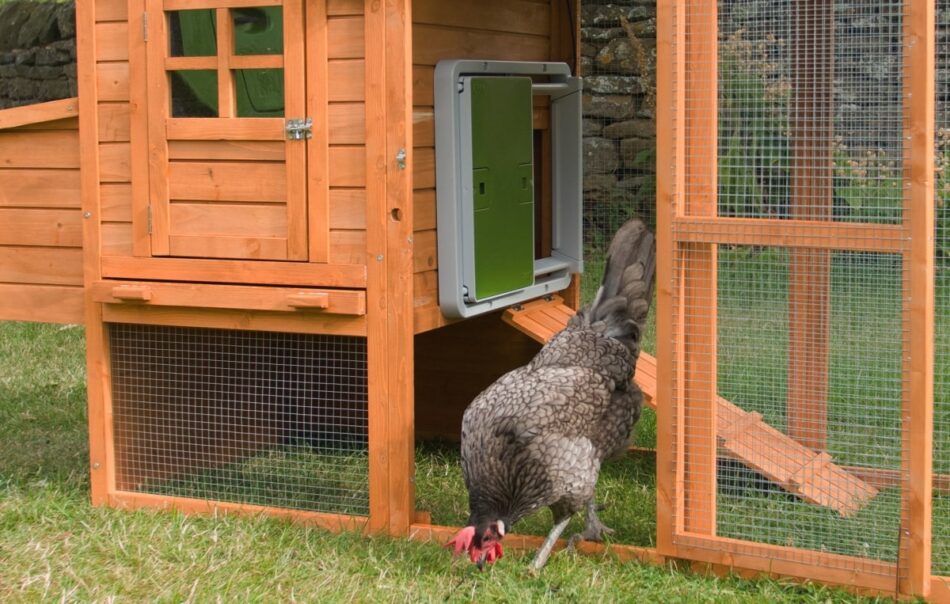
The Omlet Autodoor is a trusted coop companion for thousands of chicken keepers across the world and, just as in the dark winter months, the Autodoor offers ultimate flexibility and convenience for you and your chickens in summer too. Here’s 5 reasons you need the Autodoor for summer…
1. No more early mornings!
The Omlet Automatic Chicken Coop Door allows you to open your coop door in the morning without even getting out of bed, perfect for the early sunrises of summer when your chickens want to get out and stretch their wings.
2. Light sensor adapts to the changing season
You can set your Autodoor to open and close at a selected time, or you can use the clever light sensor and set the door to open and close at a certain light percentage, meaning the timings will adapt with the changing season so you don’t have to remember to do it yourself.
3. More play time for your chickens
As the sun rises earlier and earlier in summer, your chickens will be desperate to get out and play even earlier too. Now they can step out at dawn, and they won’t have to wait for you to start their day!
4. Improved coop security
The Omlet Autodoor opens horizontally making it far safer than other vertical, guillotine-style automated coop doors which can be easily lifted up by predators.
5. Get 15% off green Autodoors now…
when you sign up to the Omlet newsletter! Get life changing coop flexibility and save £23.99 for a limited time only! Sign up to the Omlet newsletter here to claim your discount code.
Don’t just take our word for it, here’s why our customers think the Autodoor is an essential coop accessory for summer…
Donald – “We chickens have had our automatic door for about a month and we love it. When it gets light the door opens and when it gets dark it closes. We no longer have to wait for our humans to come out late in the morning with some excuse about having overslept. I mean, really people?! There are bugs to be had and things to scratch and explore!” ⭐⭐⭐⭐⭐
Becky – “I love this door. No need to rush out when I just want to lay in bed 5 more minutes. They put themselves away at night and I don’t have to worry about something getting them. They are safe and sound. Battery last long, easy to program. Tested the sensor and it worked perfectly. Very happy with this purchase!” ⭐⭐⭐⭐⭐
Mary – “OMG. We installed the door a few nights ago and stood outside the coop like it was New Years Eve to watch the door shut. I can’t tell you the freedom this gives us. No more worrying about getting home to shut the coop door, no more getting up at dawn through all sorts of weather. And the door is very secure. No animal can possibly pry it open. I just ordered a second one for my other coop!” ⭐⭐⭐⭐⭐
John – “My wife was skeptical when I ordered the Omlet auto door! The fist morning she looked out of the window and saw all of our Girls out of their coop and roaming the pen without having to get out of bed, she said it was LIFE CHANGING!” ⭐⭐⭐⭐⭐
15% off Green Autodoors when you sign up to the Omlet newsletter!
Terms and conditions
This promotion is only valid from 17/03/21 – midnight on 18/03/21. Once you have entered your email address on the website you will receive a discount code that can be used at checkout. By entering your email you agree to receive the Omlet Newsletter. You can unsubscribe at any point. This offer is available on the Green Autodoor only. The offer does not apply to the Grey Autodoor. This offer also excludes the power adaptors for Autodoor, Autodoor Replacement Wire and Duracell Batteries. Offer is limited to 2 green Autodoors per household. Subject to availability. Omlet ltd. reserves the right to withdraw the offer at any point. Offer cannot be used on delivery, existing discounts or in conjunction with any other offer.
This entry was posted in Chickens
 Chickens sometimes lay eggs that look nothing like a standard supermarket egg. Some are huge, some are tiny, some are ball-shaped, some are pointy, and some are soft-shelled. There are various reasons for these oddities.
Chickens sometimes lay eggs that look nothing like a standard supermarket egg. Some are huge, some are tiny, some are ball-shaped, some are pointy, and some are soft-shelled. There are various reasons for these oddities. Are oddly-shaped chicken eggs a sign of illness?
Are oddly-shaped chicken eggs a sign of illness?


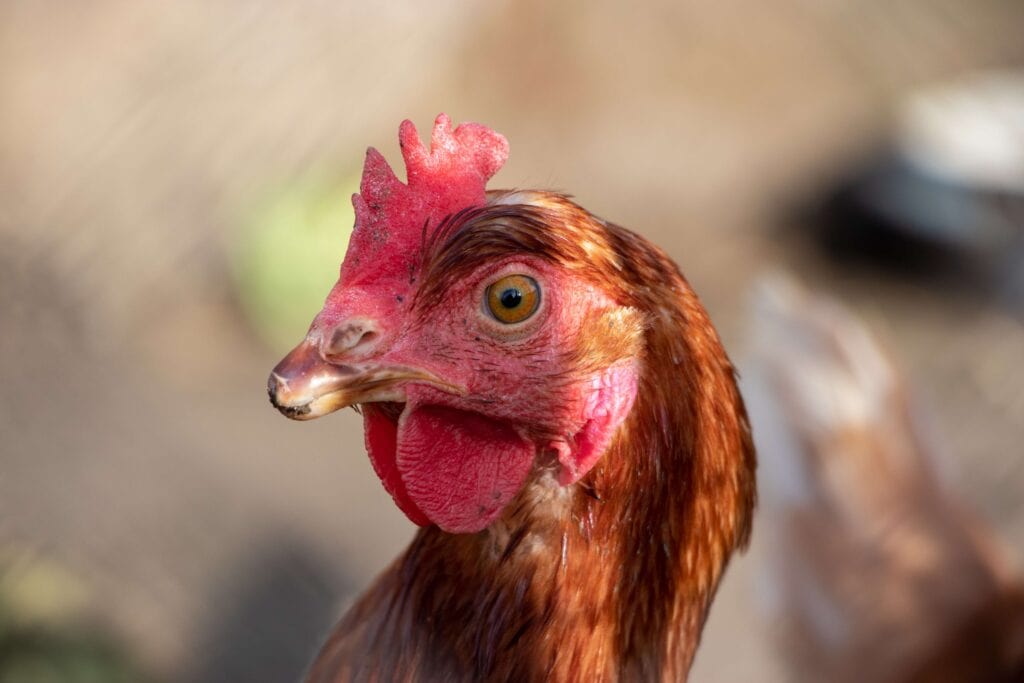









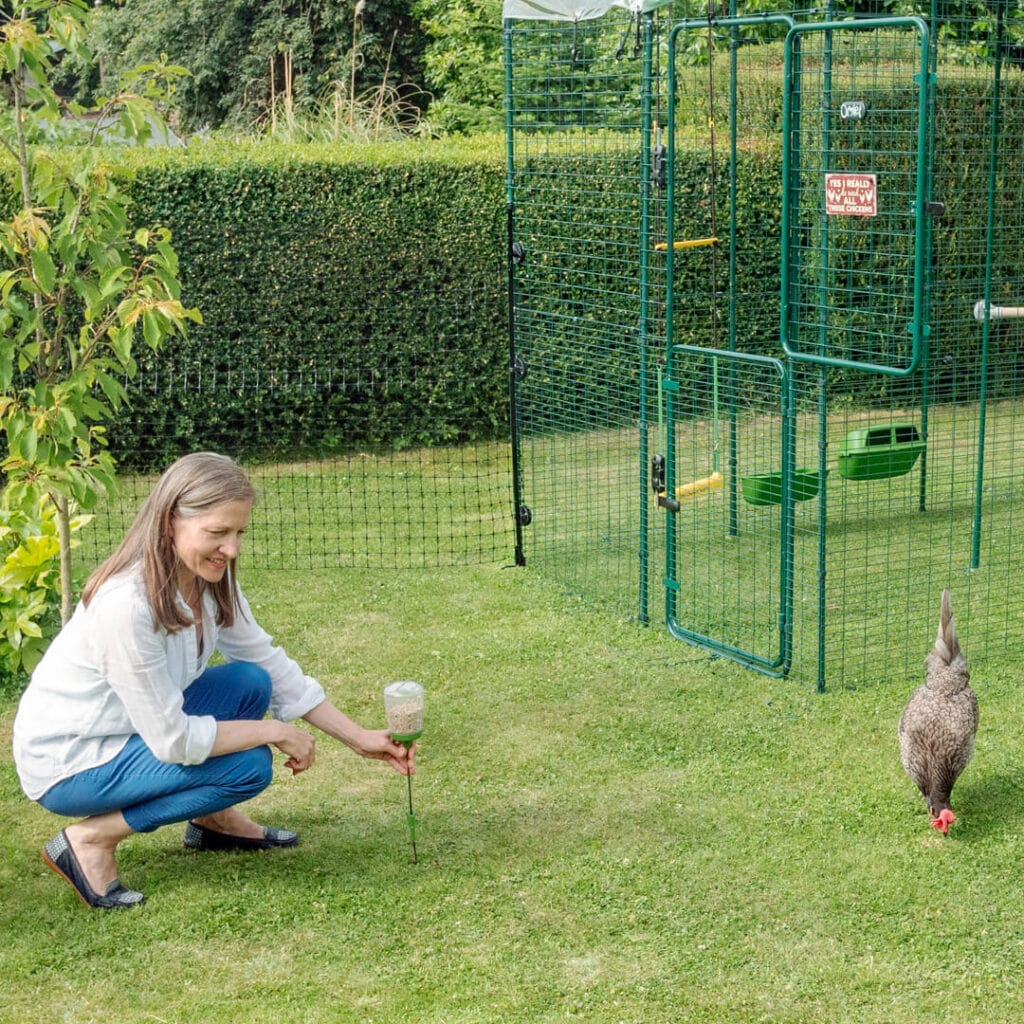


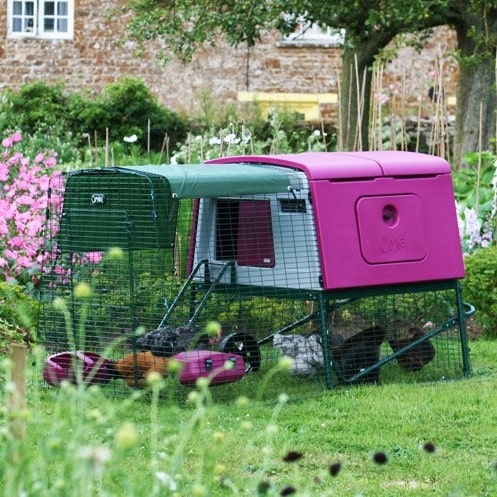
 Keeping chickens is a wonderful way to educate children about the lifecycle of animals and show them the many benefits of keeping any farm animal. It’s not just the never-ending supply of eggs on toast that children will enjoy – keeping chickens is a rewarding experience that will teach children of all ages the value of animal life and companionship.
Keeping chickens is a wonderful way to educate children about the lifecycle of animals and show them the many benefits of keeping any farm animal. It’s not just the never-ending supply of eggs on toast that children will enjoy – keeping chickens is a rewarding experience that will teach children of all ages the value of animal life and companionship. 
 Healthy chickens eat and drink lots in a day, so ask your children to check out our guide on
Healthy chickens eat and drink lots in a day, so ask your children to check out our guide on 
 There are many Easter traditions that involve chicken eggs, the ever-popular egg hunt being the most obvious example. Try hiding eggs that your chickens have laid themselves – it’s lots of fun and a good way of working up an appetite before an egg-based breakfast!
There are many Easter traditions that involve chicken eggs, the ever-popular egg hunt being the most obvious example. Try hiding eggs that your chickens have laid themselves – it’s lots of fun and a good way of working up an appetite before an egg-based breakfast!














 If you were to meet a species of animal for the first time and had to make an accurate guess about its diet, you would get lots of clues by looking at its teeth. The teeth of a dog, like the teeth of a bear, proclaim loud and clear that this animal is an omnivore – that is, one that eats both meat and vegetables. If you think of your dog as a domesticated wolf, you get a good idea of its natural diet.
If you were to meet a species of animal for the first time and had to make an accurate guess about its diet, you would get lots of clues by looking at its teeth. The teeth of a dog, like the teeth of a bear, proclaim loud and clear that this animal is an omnivore – that is, one that eats both meat and vegetables. If you think of your dog as a domesticated wolf, you get a good idea of its natural diet.
 1. Rabbits
1. Rabbits

























 Spring is the perfect time of year to set up a chicken coop and bring home new hens! As your garden begins to stir from its winter slumber, your chickens will benefit from the first fresh greens that become available – essential to your hens’ diets. As well as this, the warmer and longer days mean that your chickens will start producing more eggs again after the winter lull. Furthermore, raising chickens in the gentler climate of the season also means that you’ll have a happier and livelier flock!
Spring is the perfect time of year to set up a chicken coop and bring home new hens! As your garden begins to stir from its winter slumber, your chickens will benefit from the first fresh greens that become available – essential to your hens’ diets. As well as this, the warmer and longer days mean that your chickens will start producing more eggs again after the winter lull. Furthermore, raising chickens in the gentler climate of the season also means that you’ll have a happier and livelier flock!










